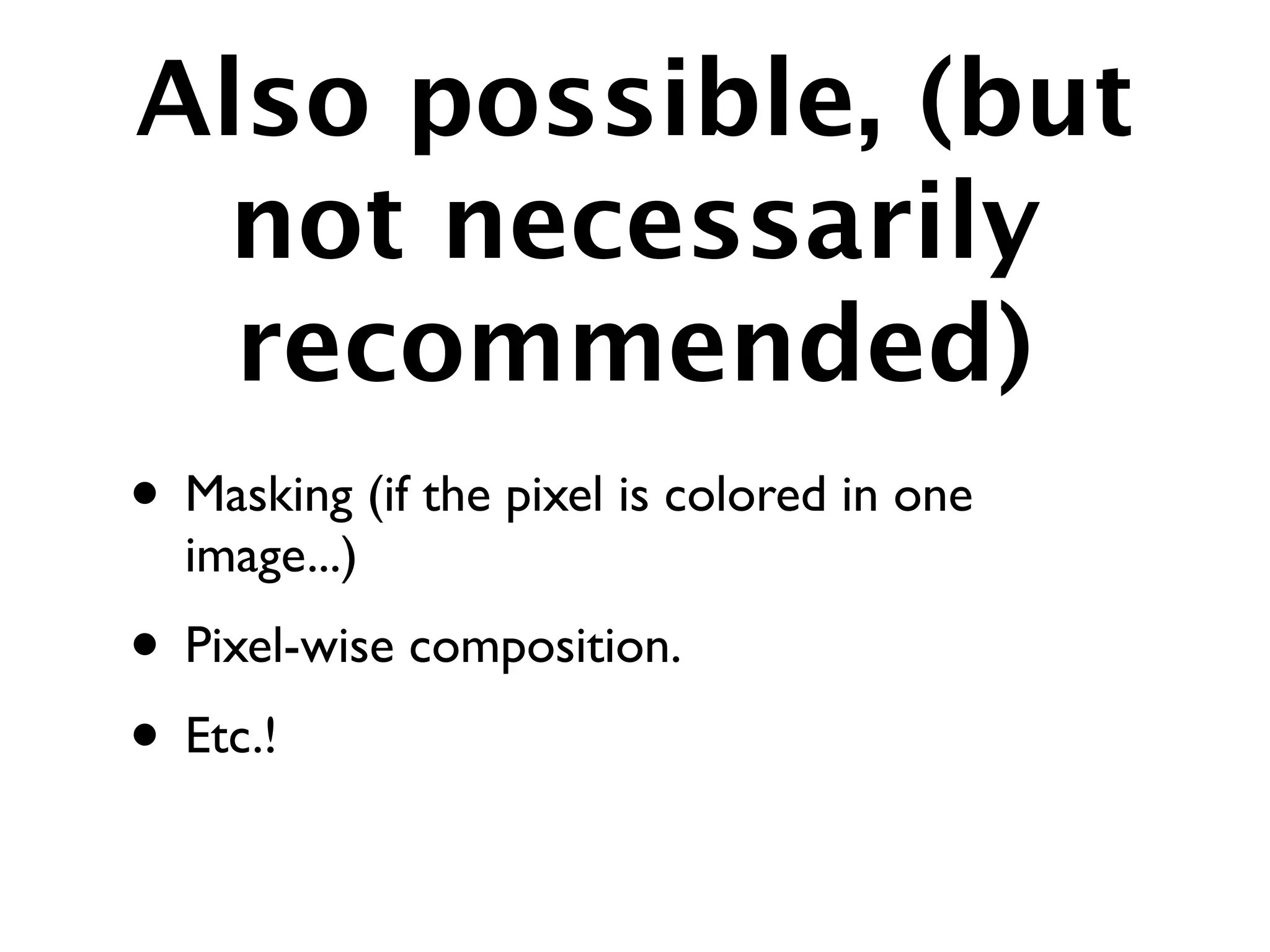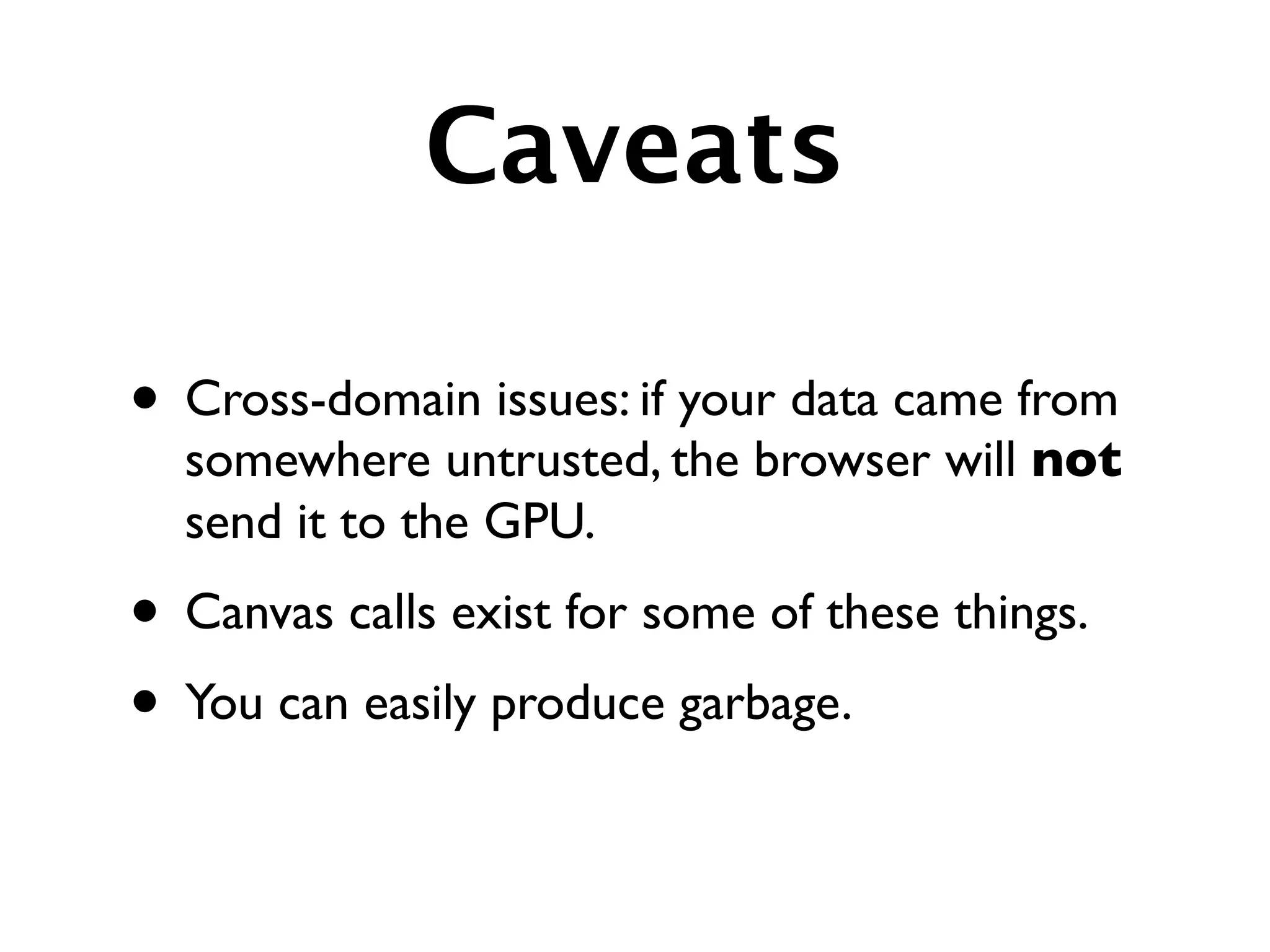This document provides tips and tricks for using the Canvas API, with a focus on game programming and bitmaps. It discusses setting up an animation loop using requestAnimationFrame, caching techniques like double buffering to improve performance, and manipulating pixel data directly using ImageData to implement features like hit detection and image filters. The document encourages profiling code and considers challenges in testing Canvas code.
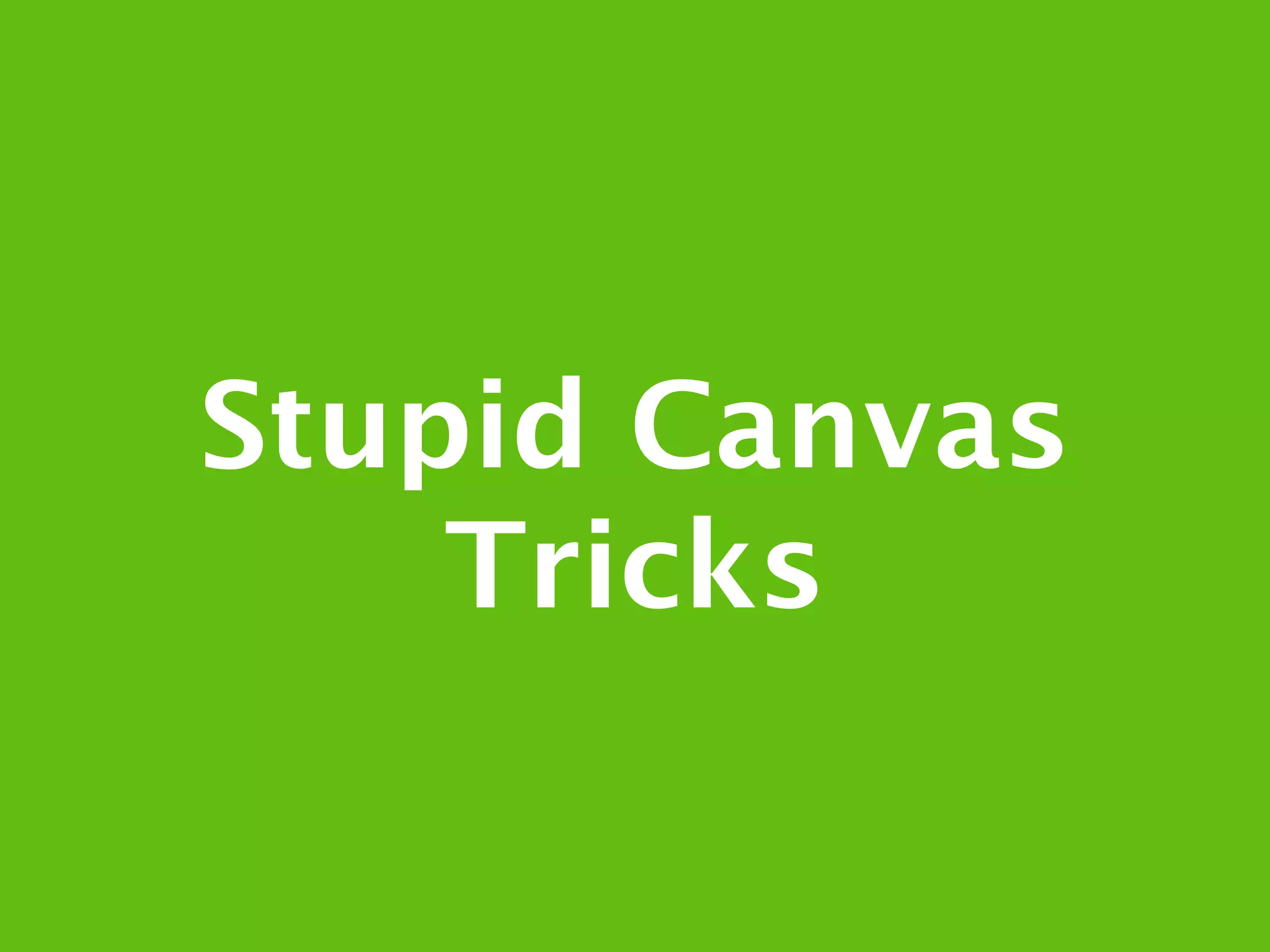


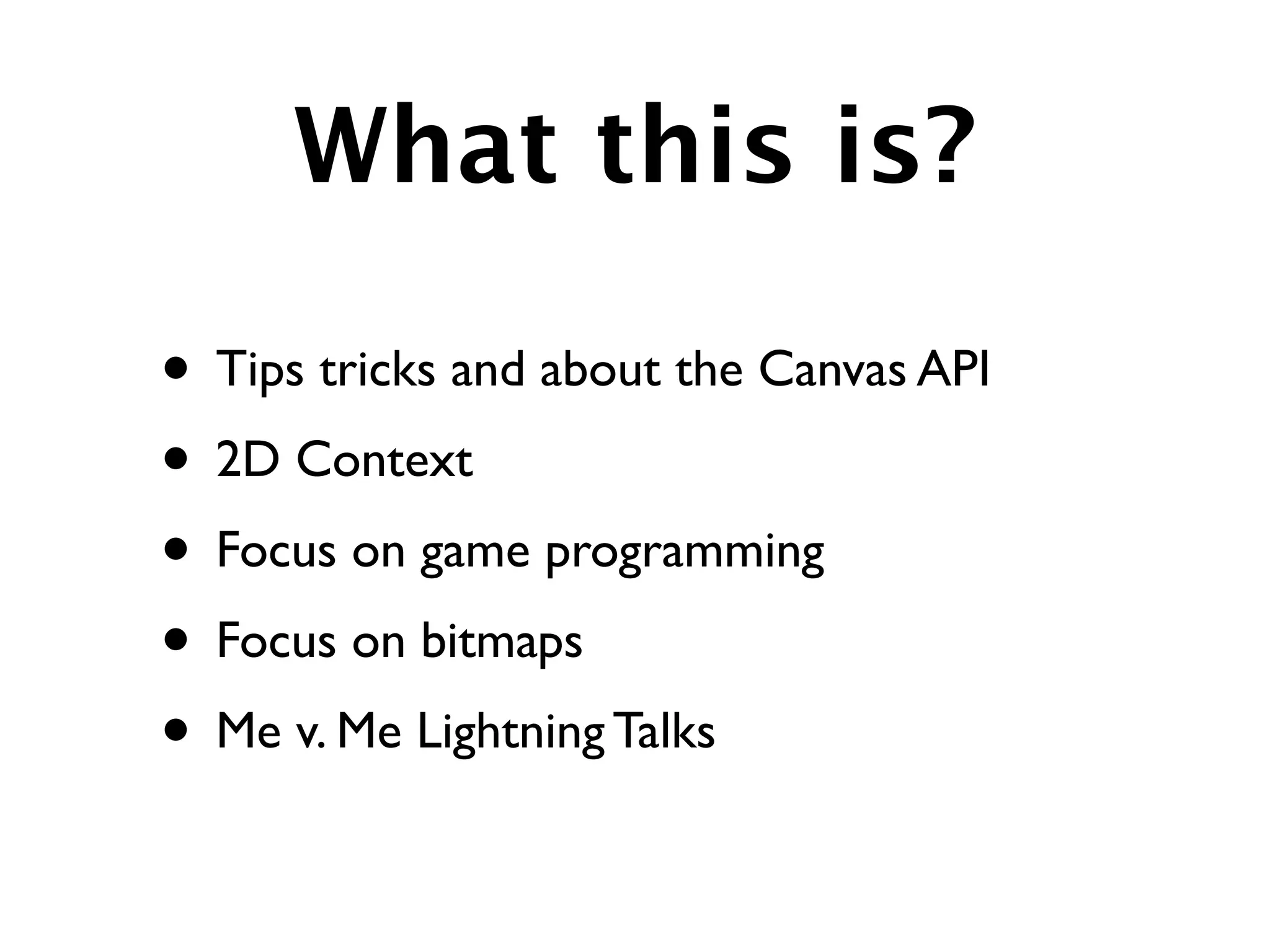
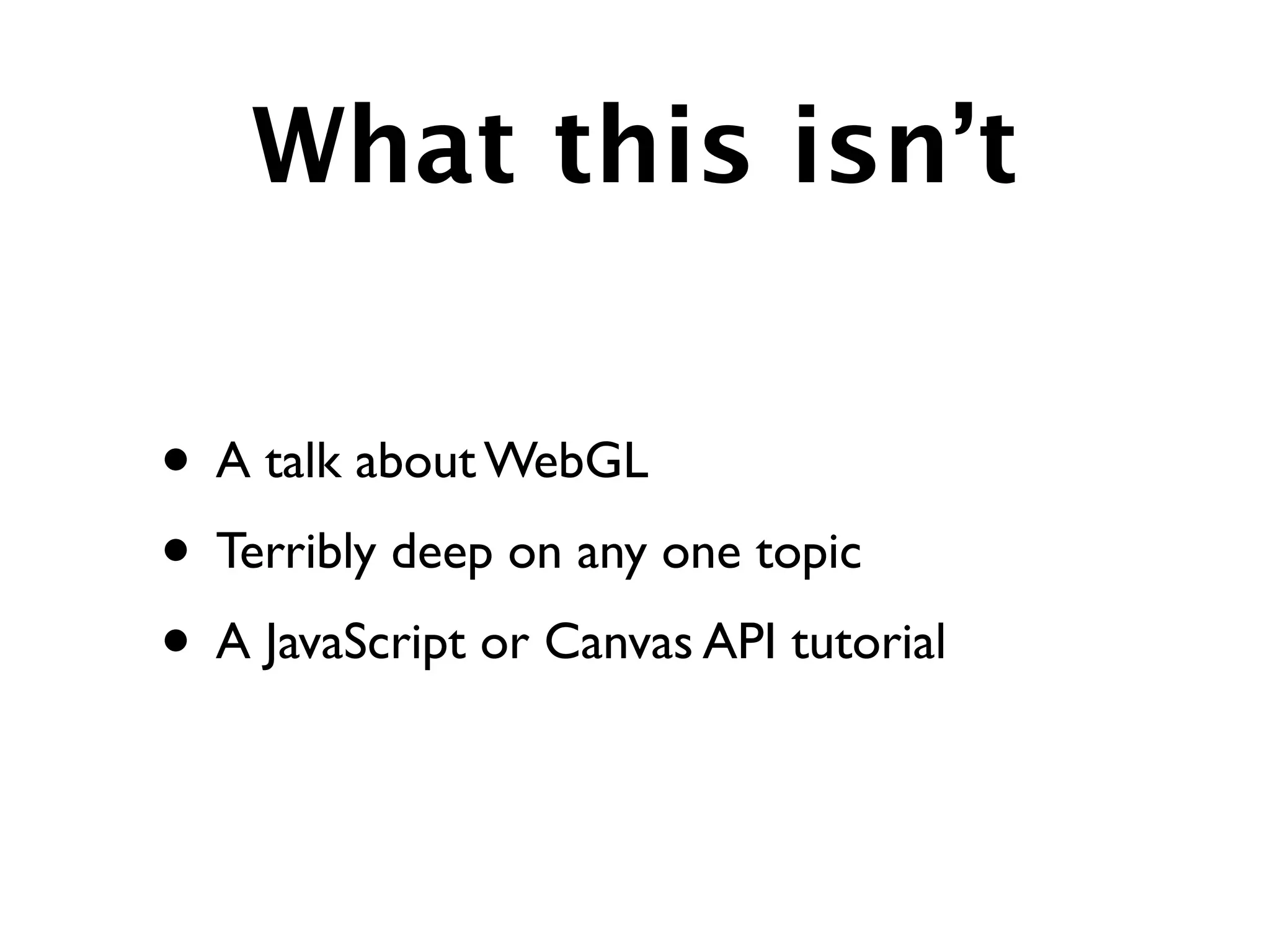

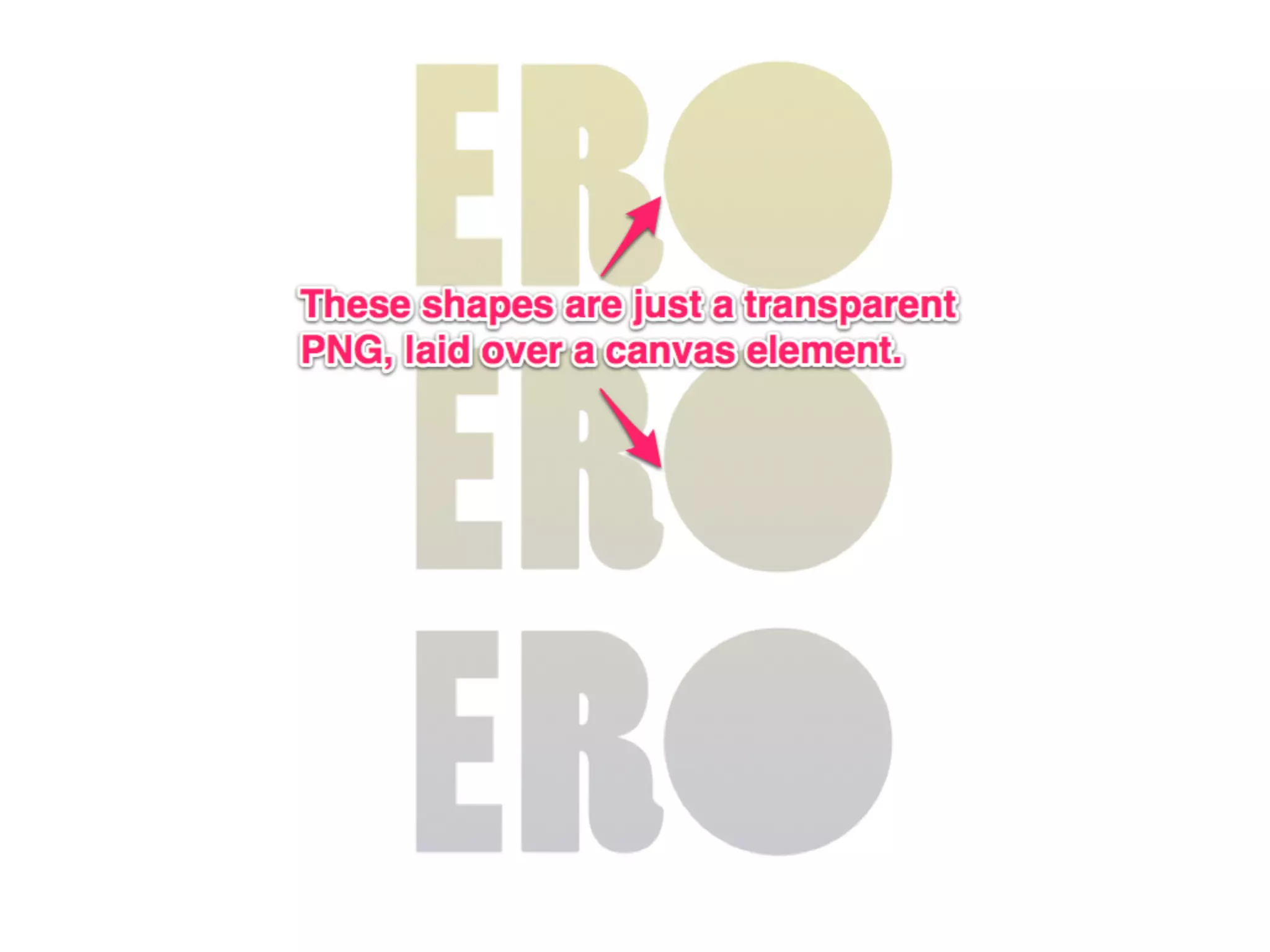
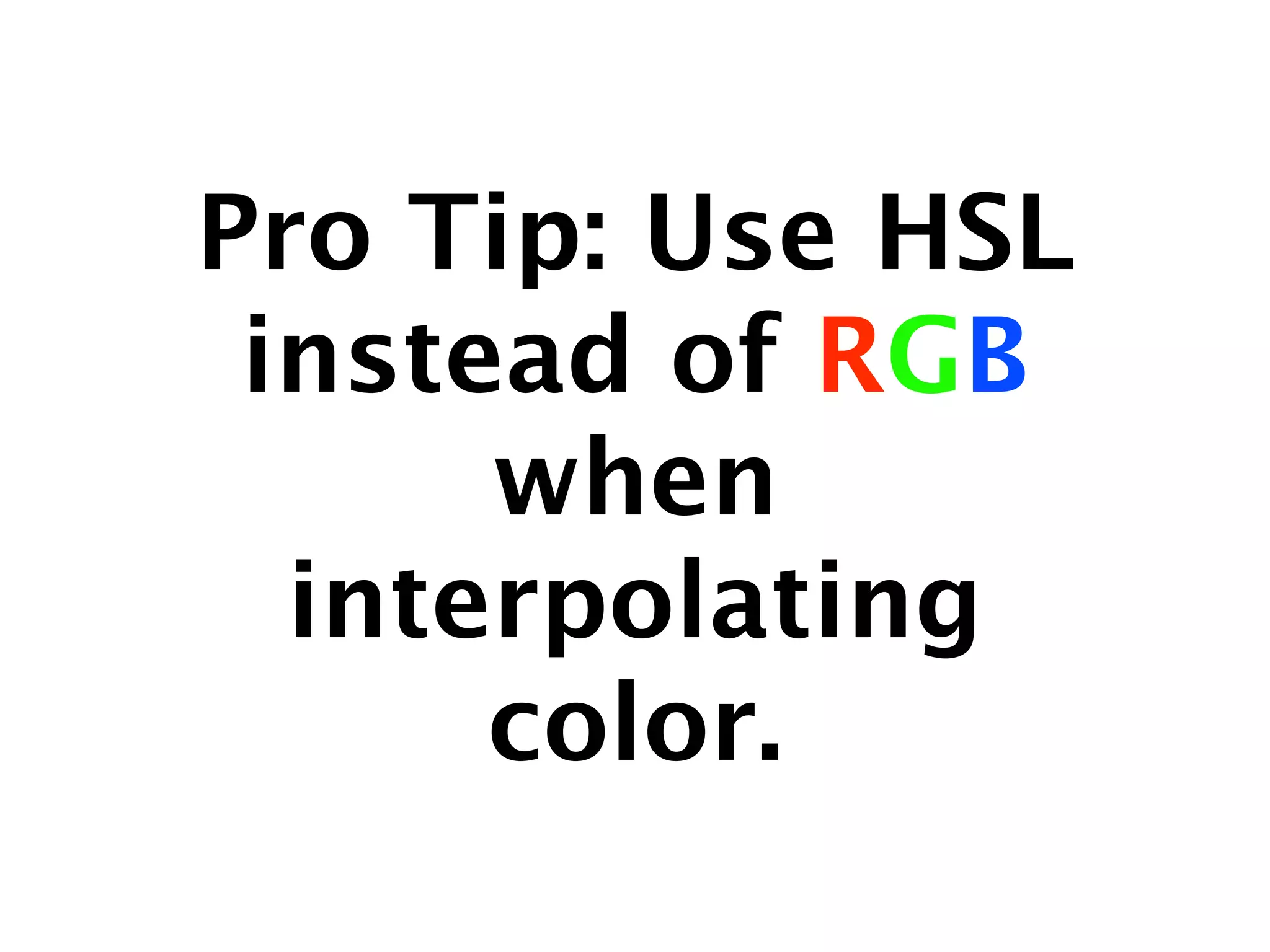
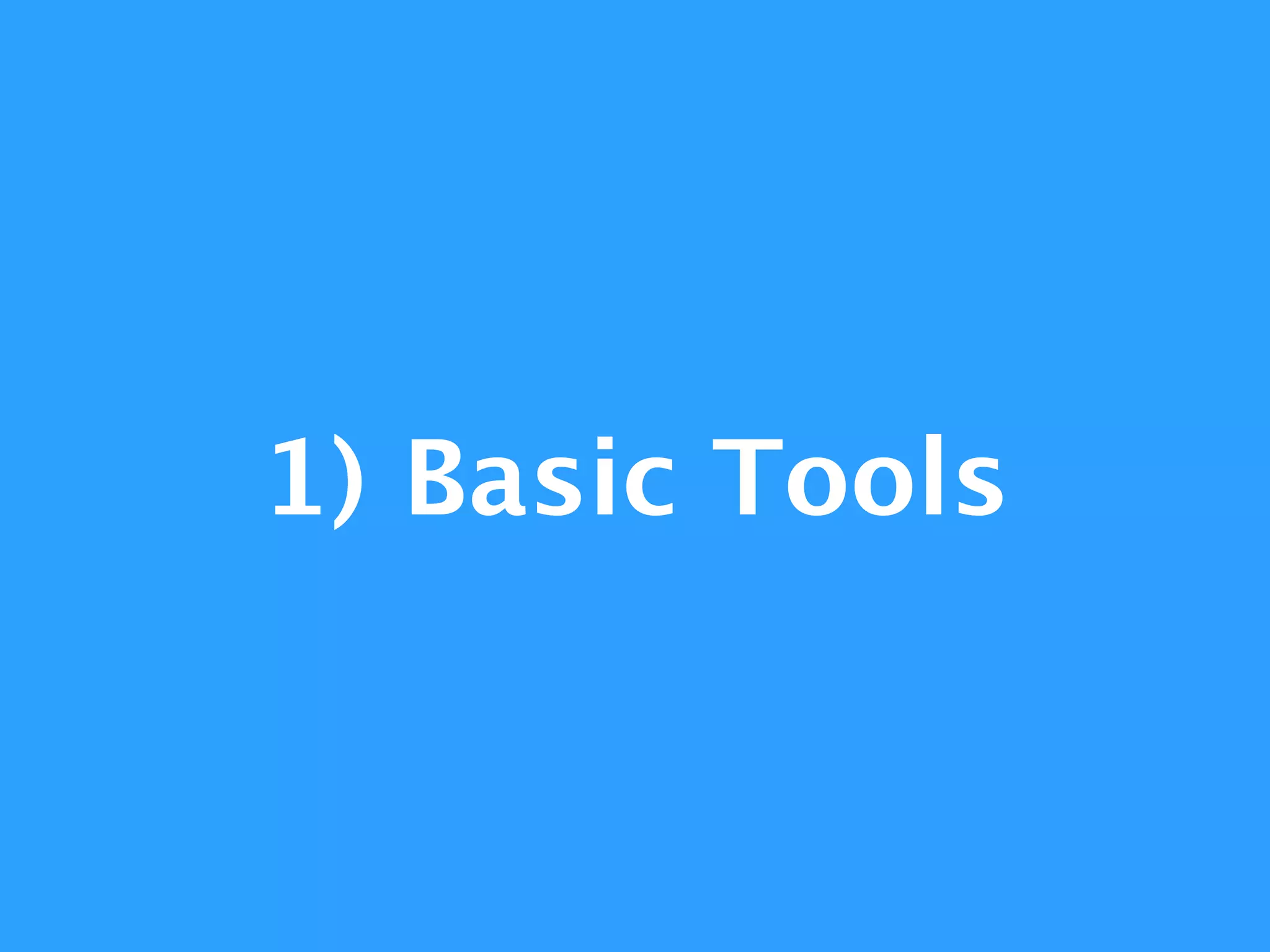

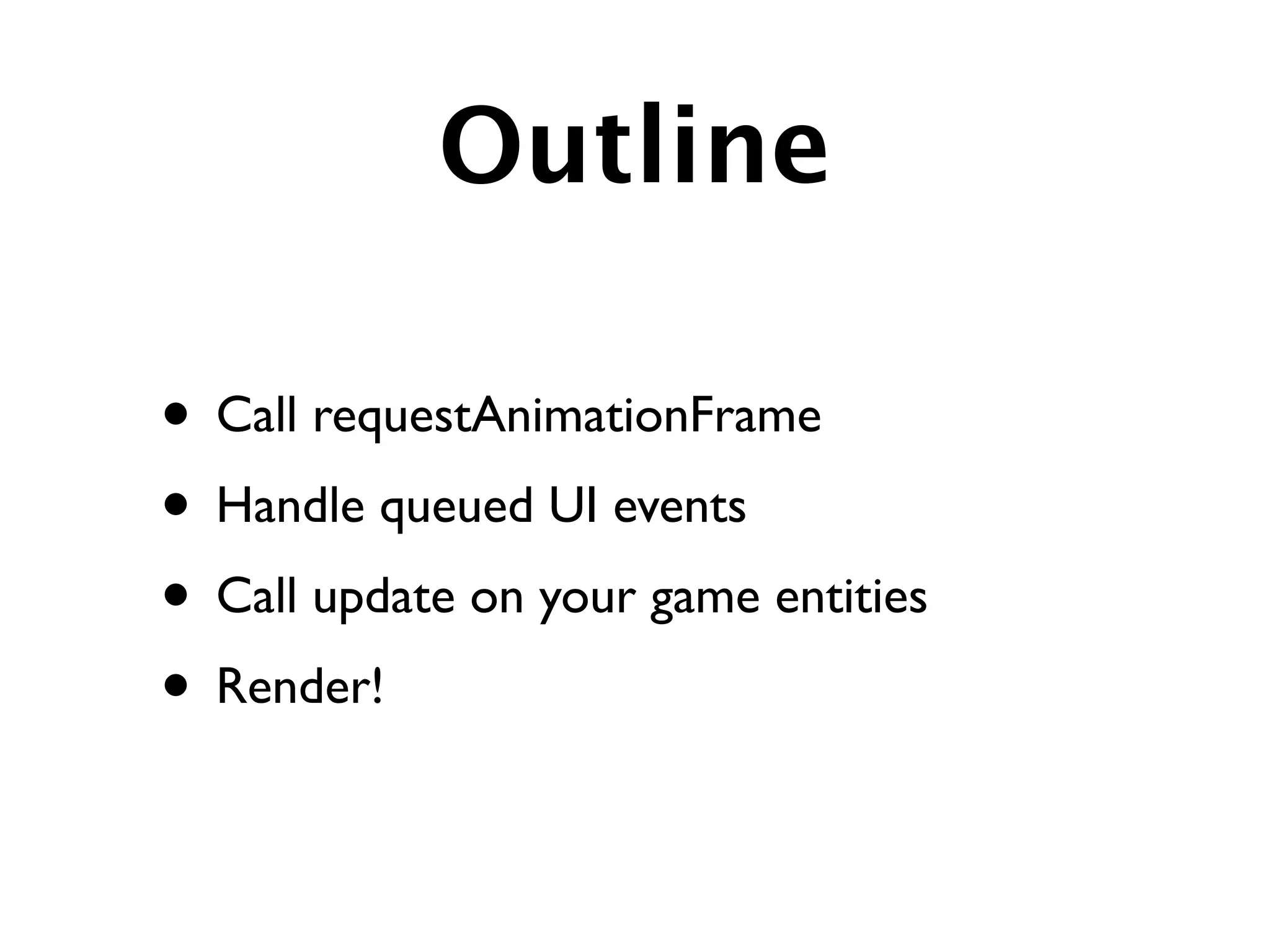
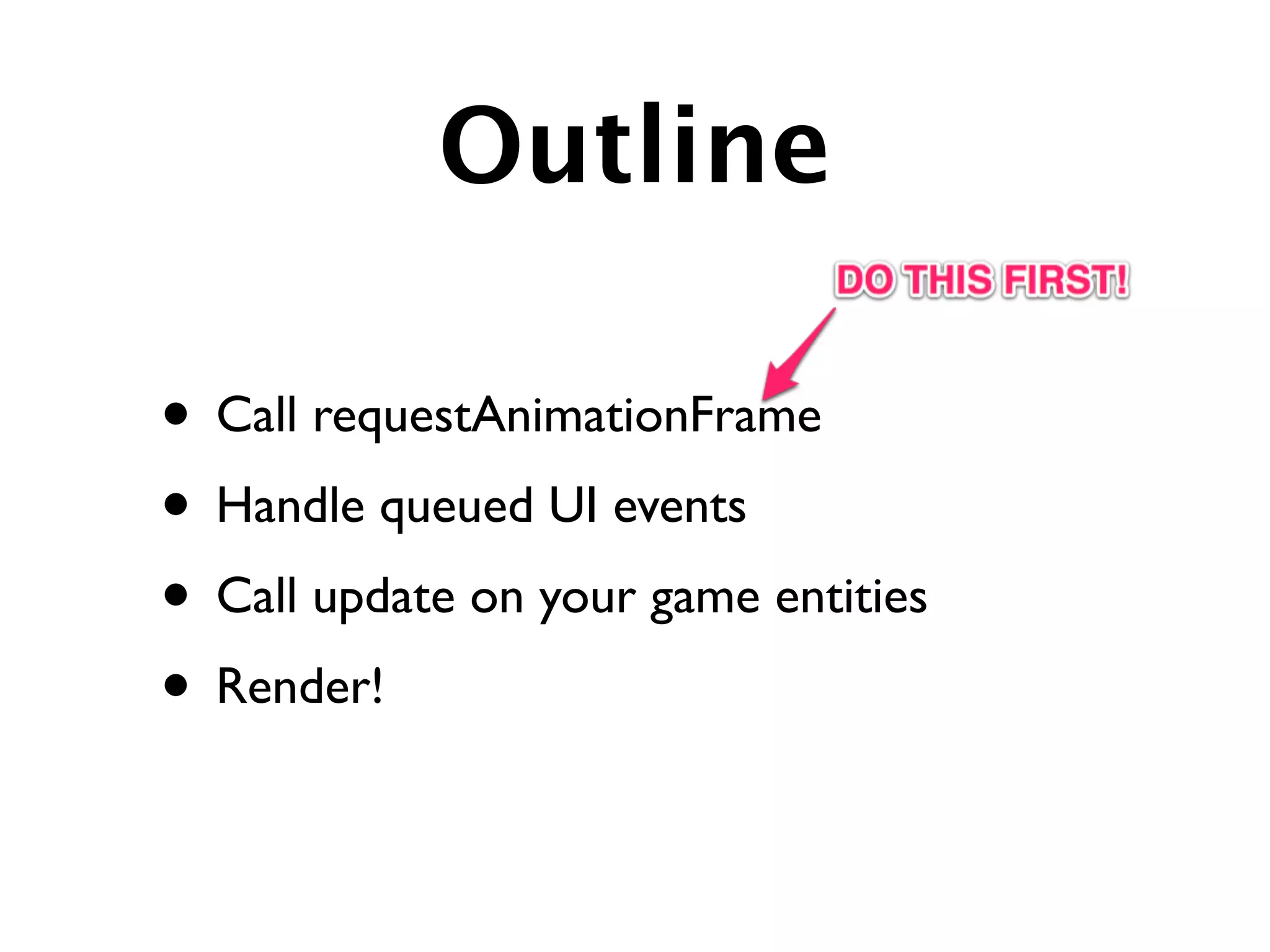
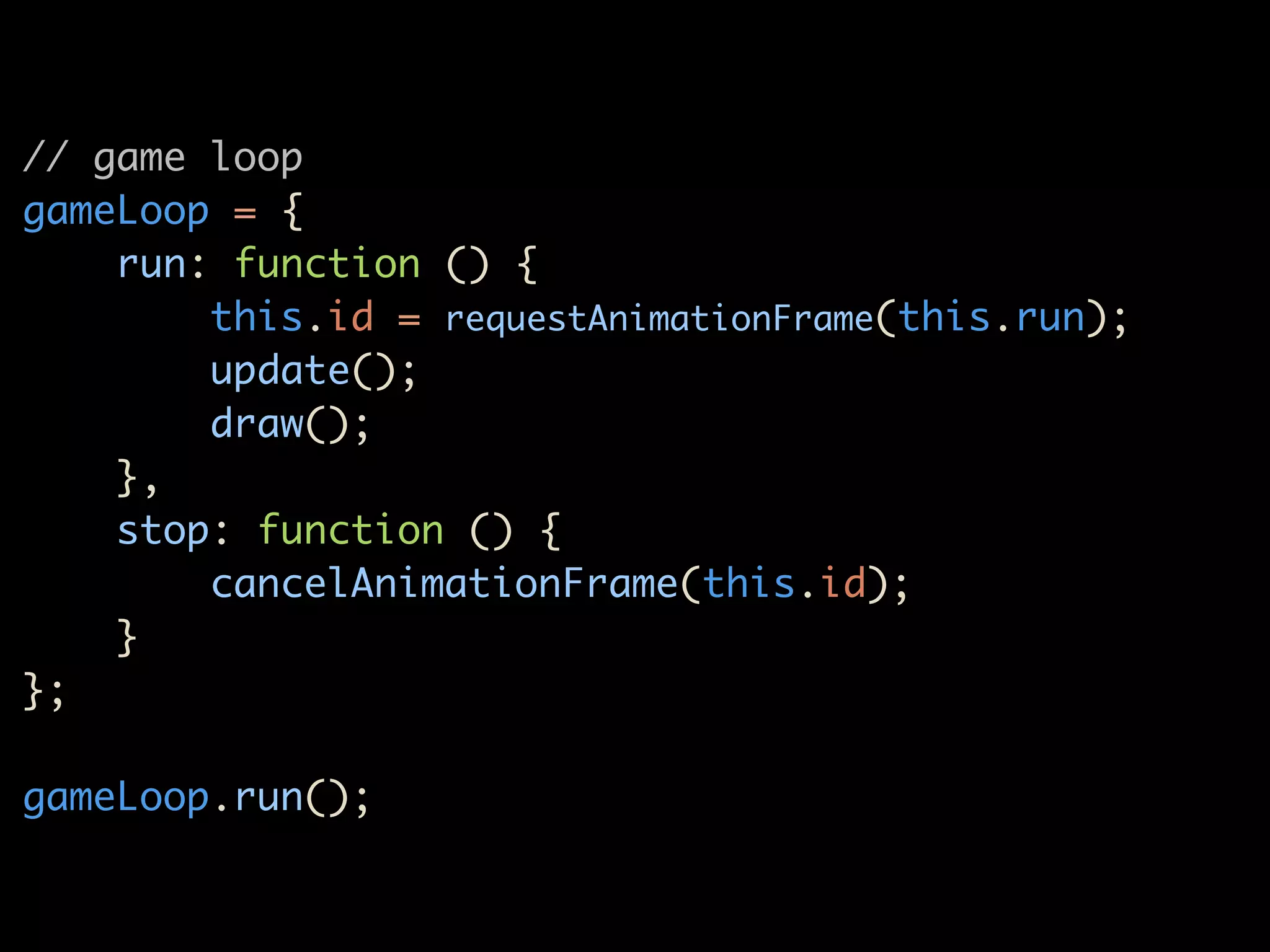
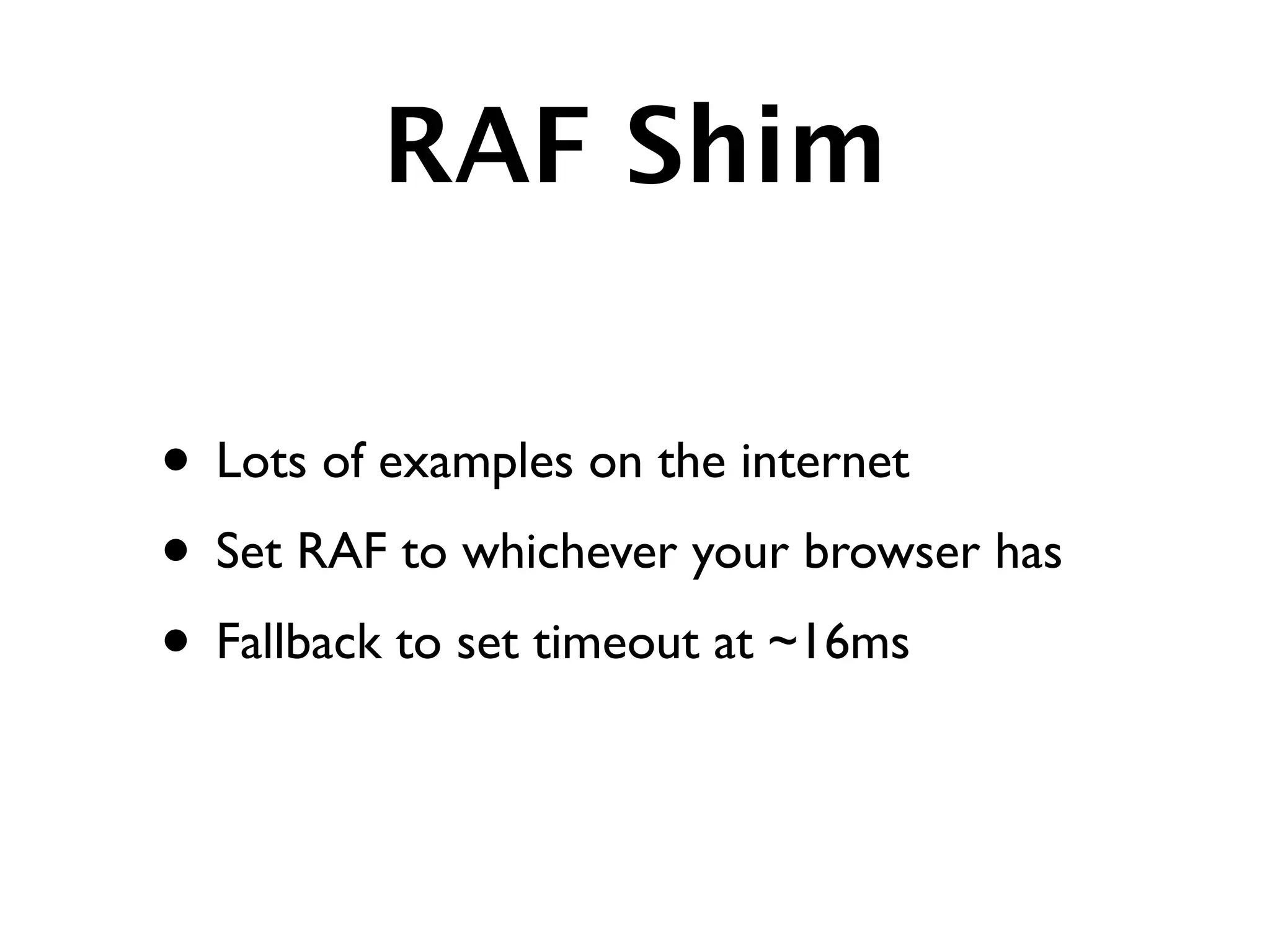
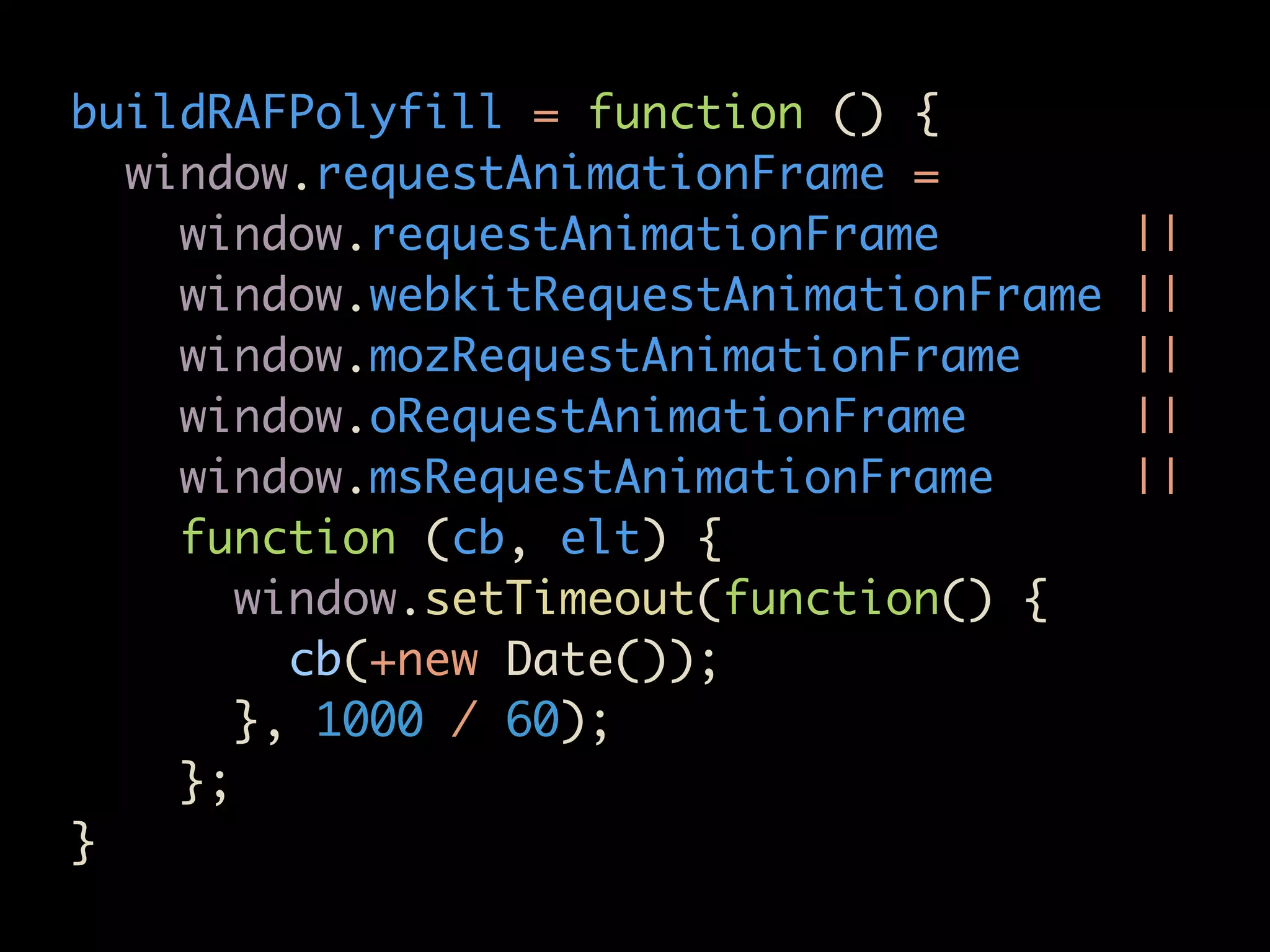

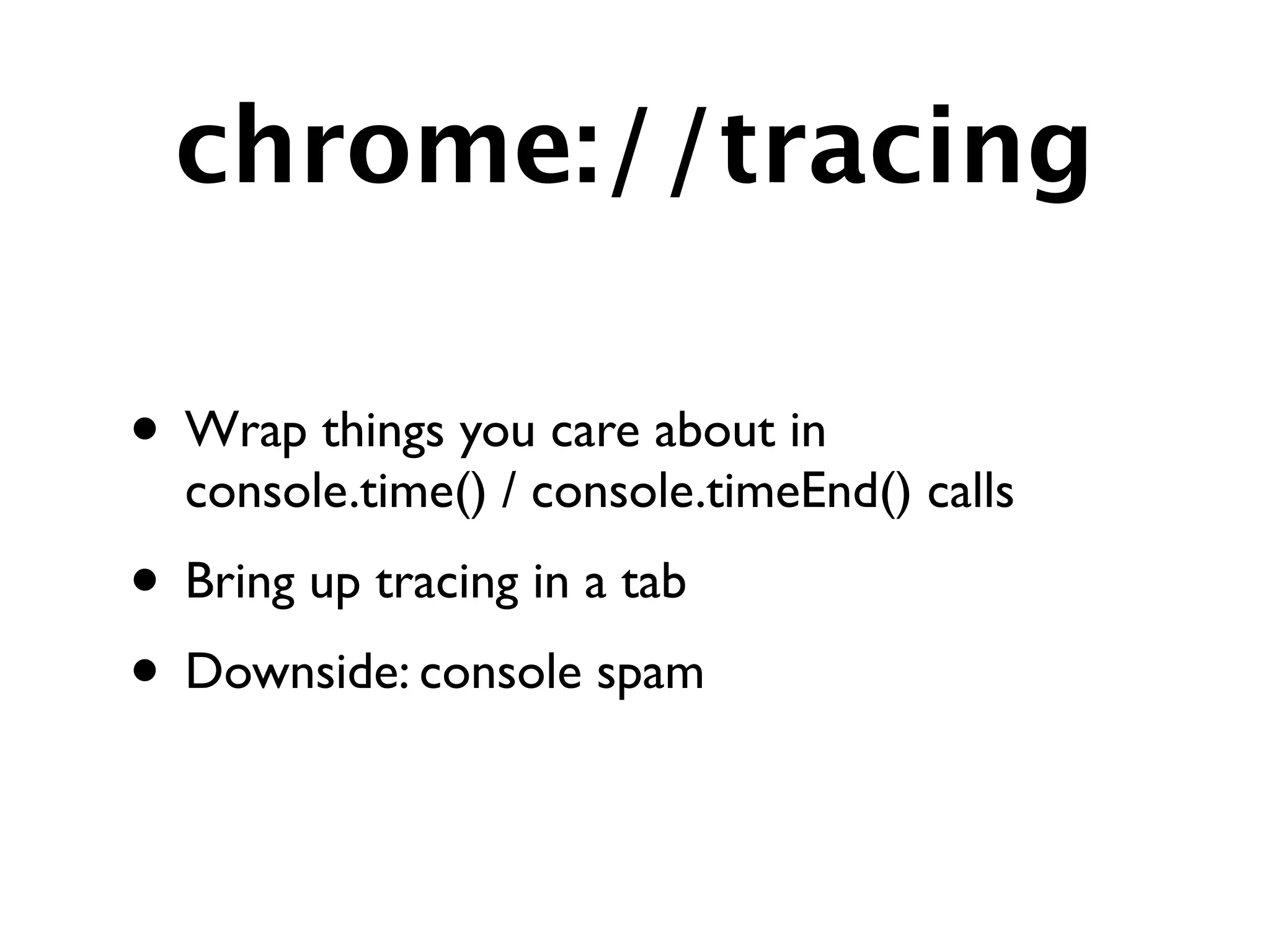
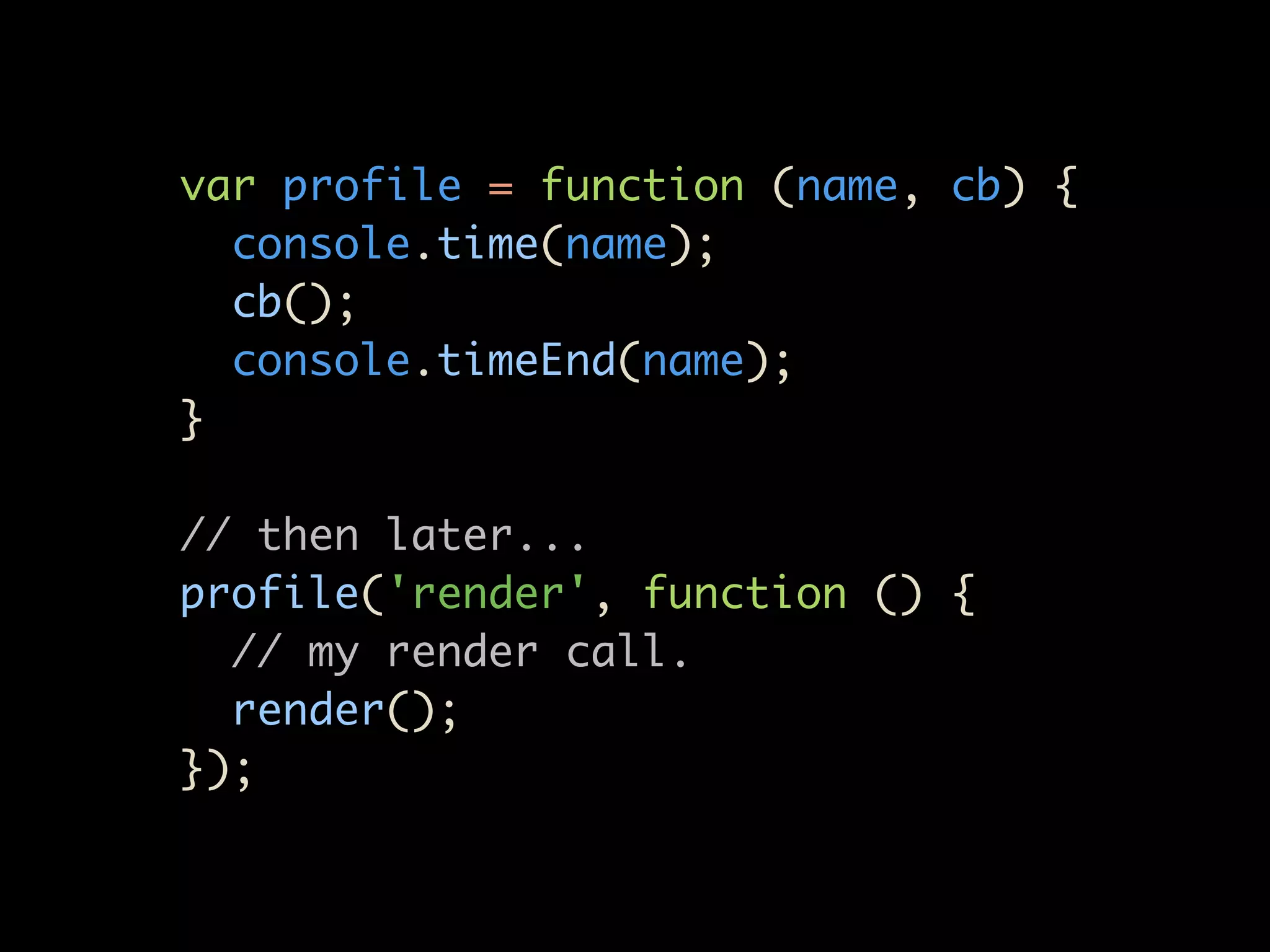
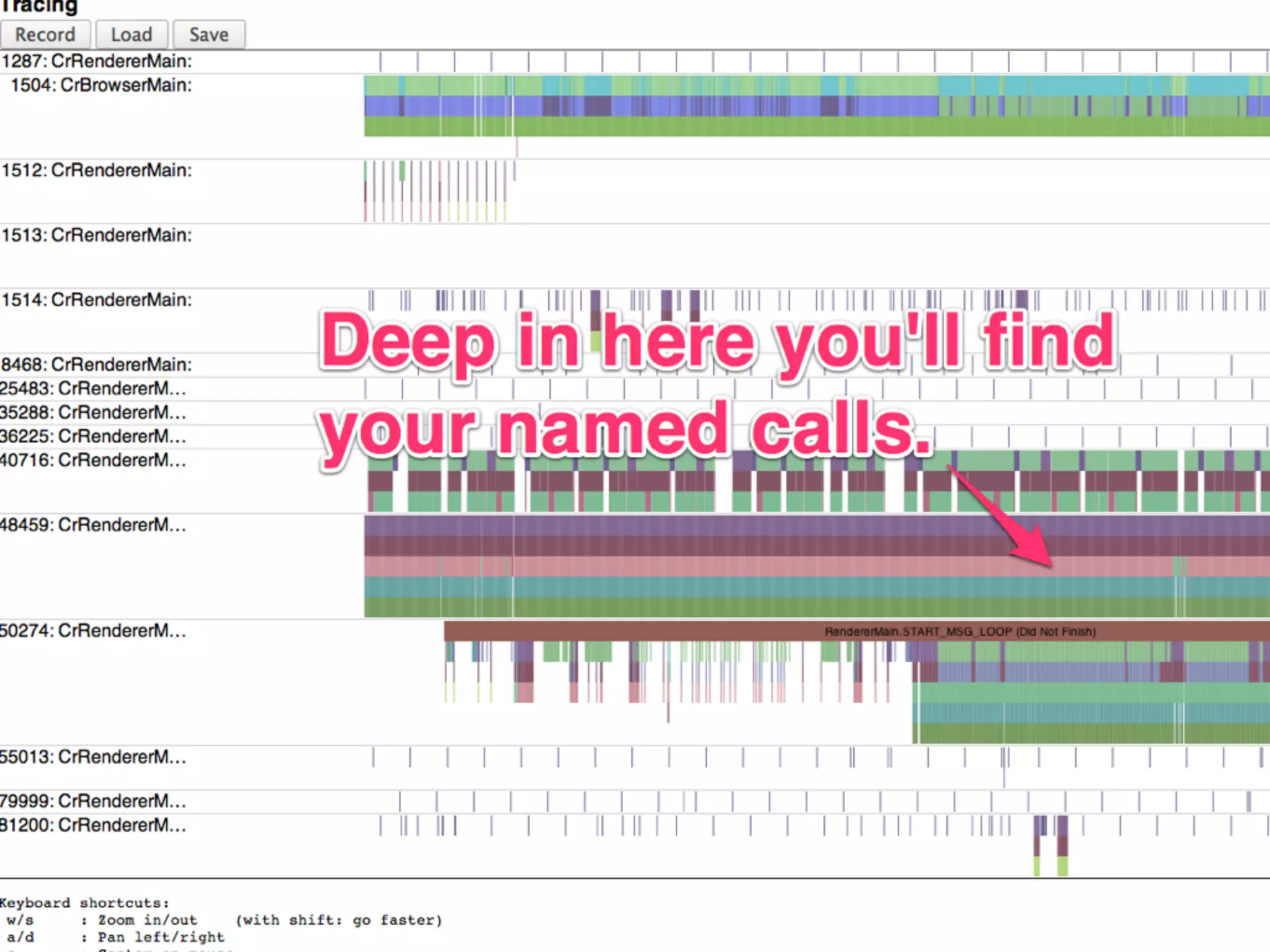
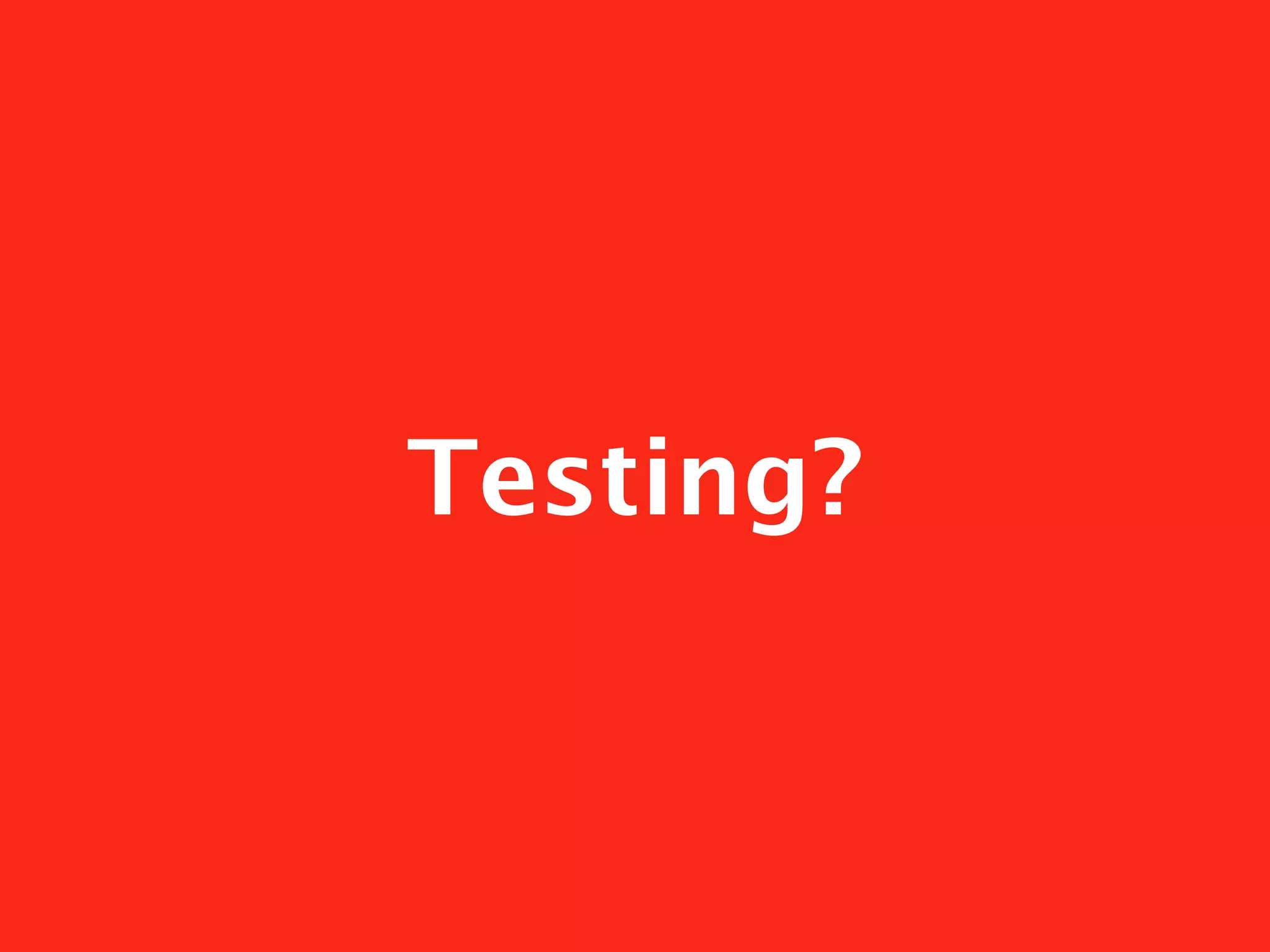
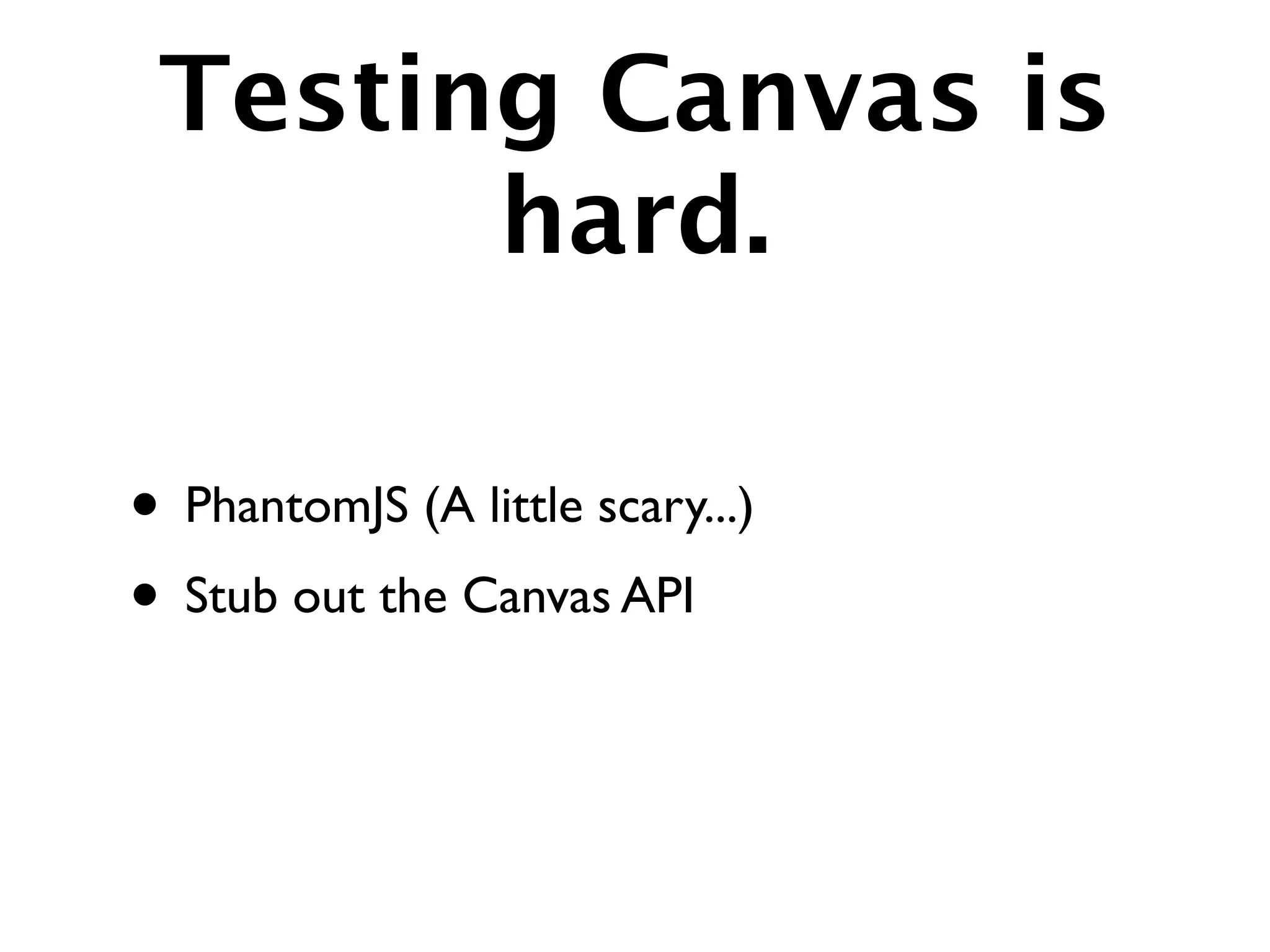
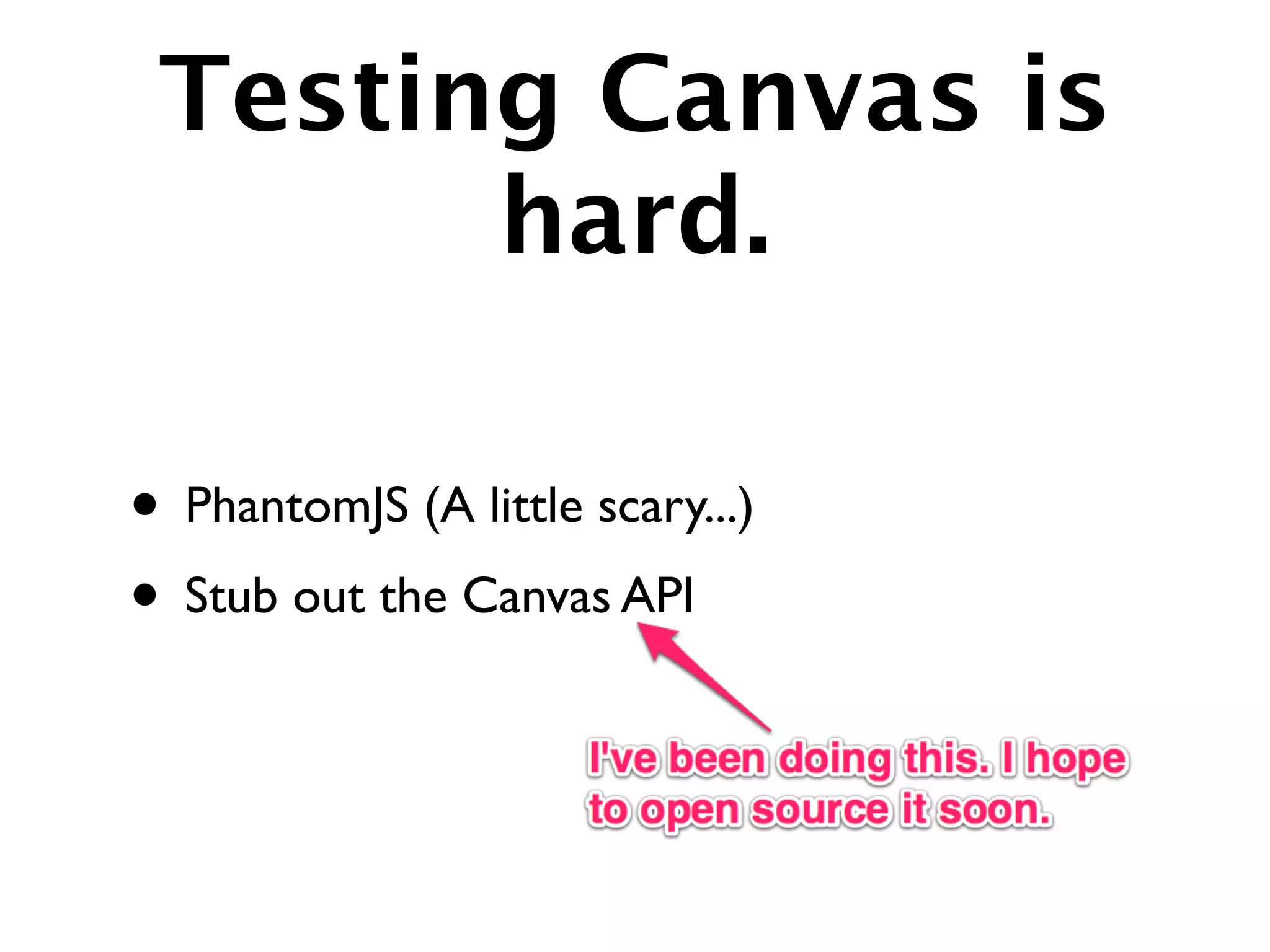
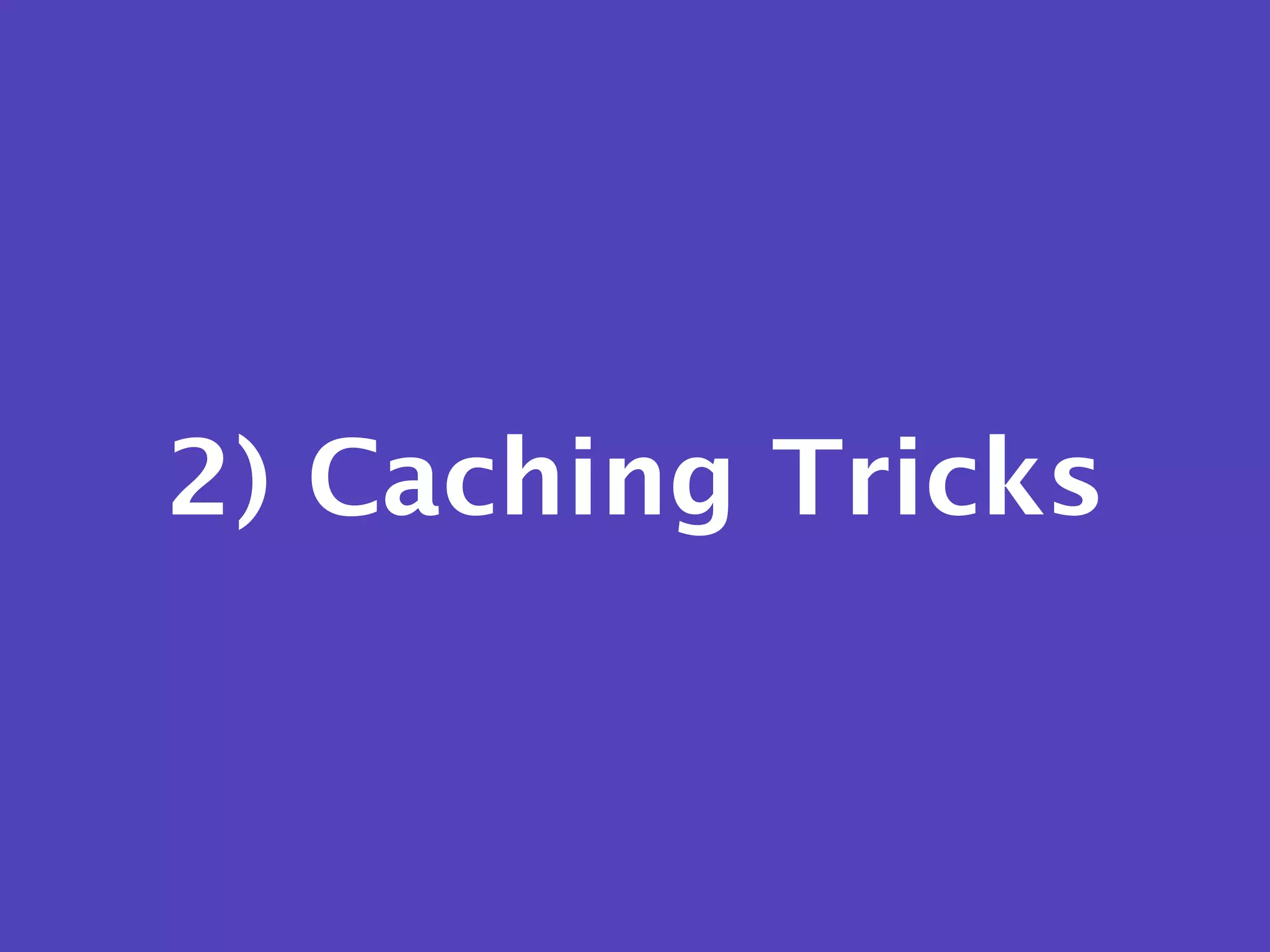
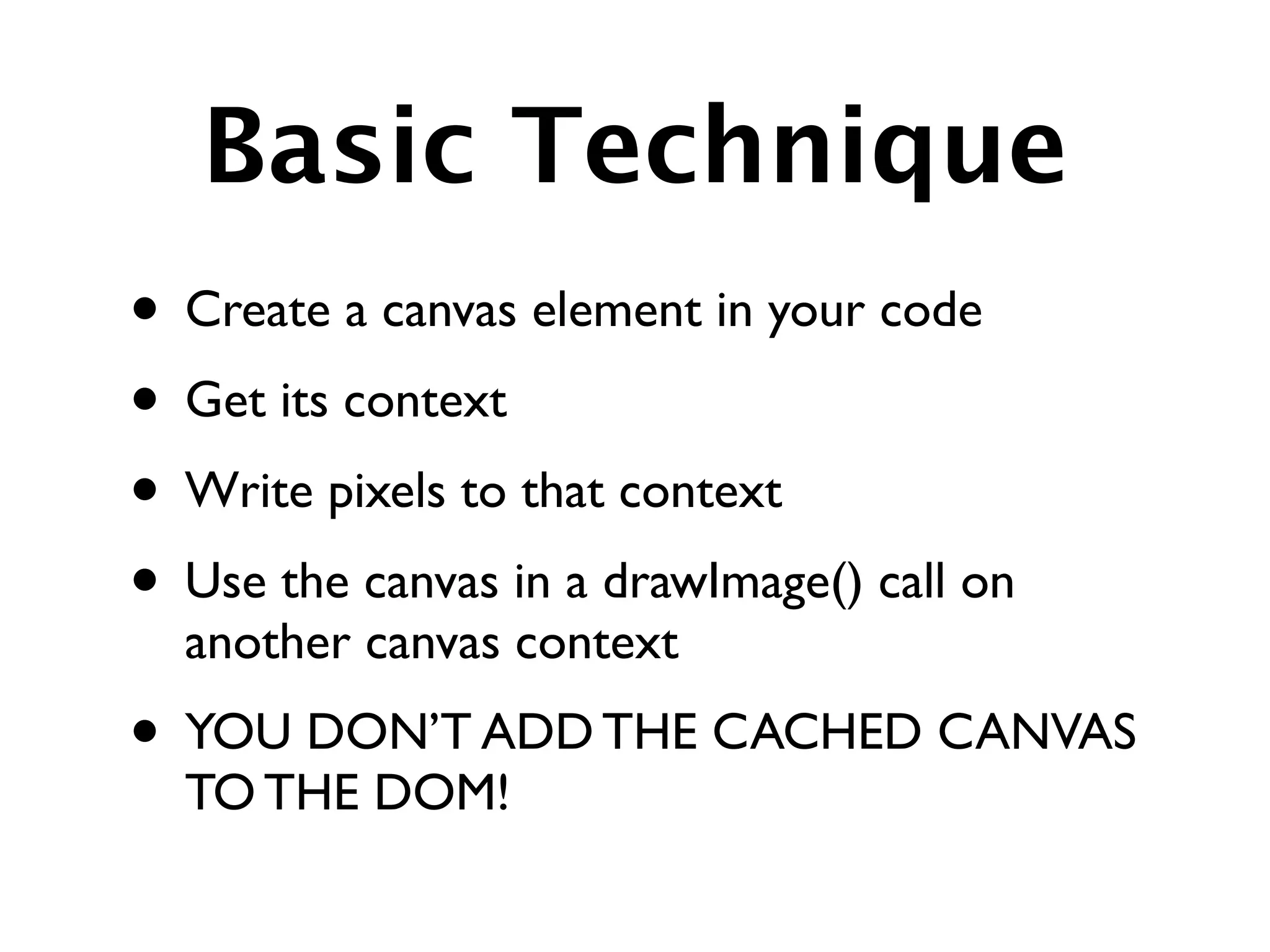
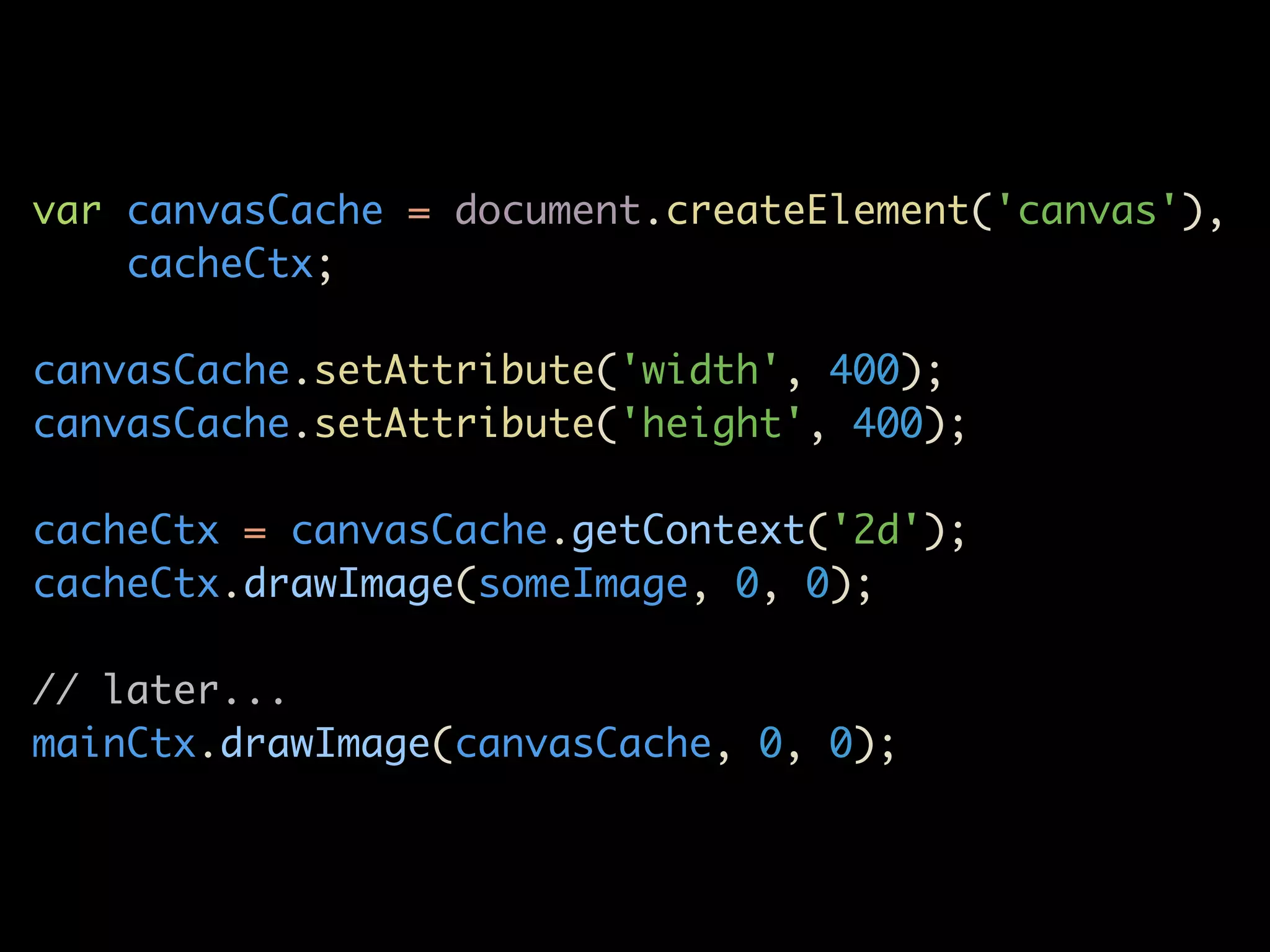
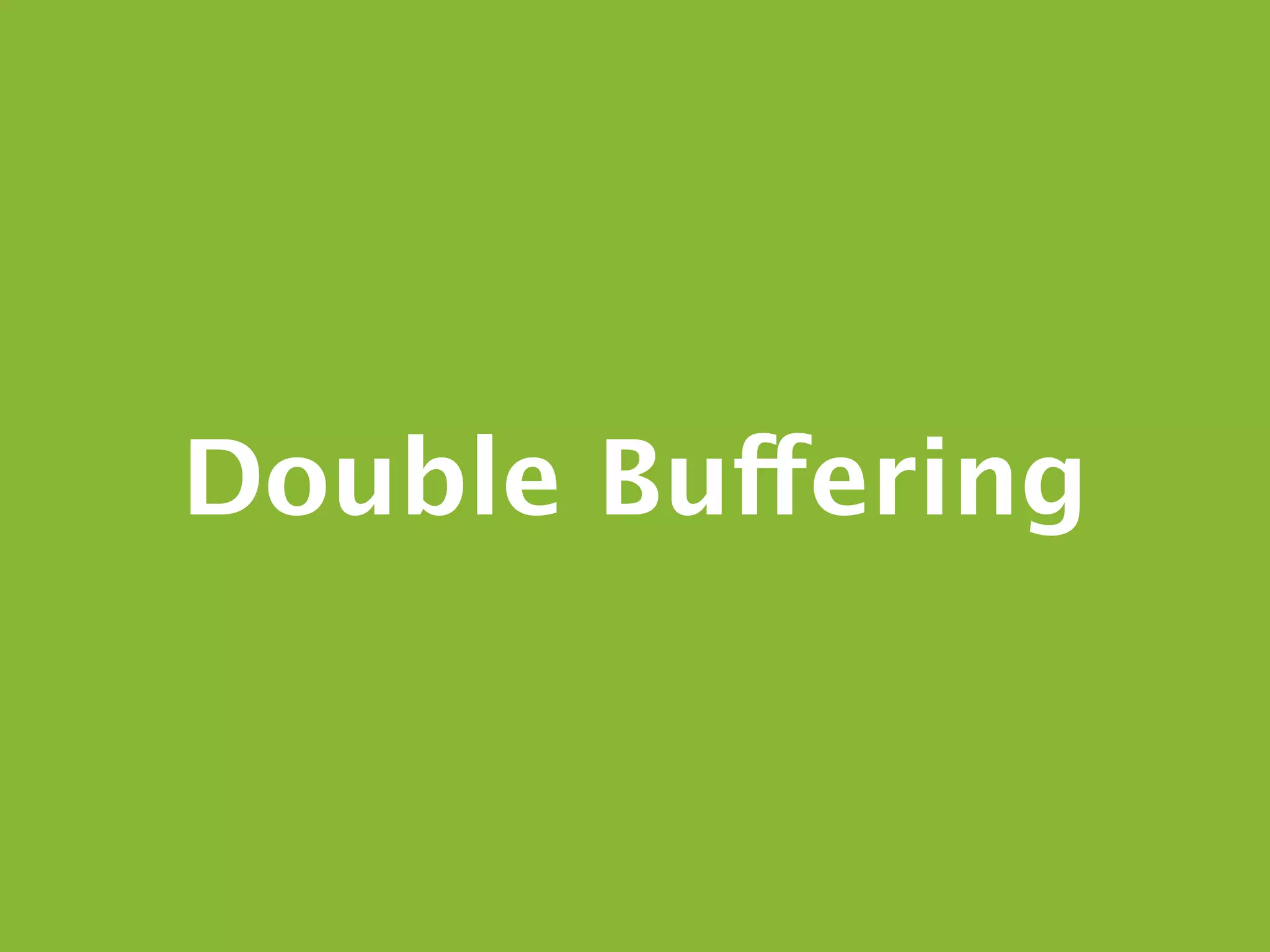
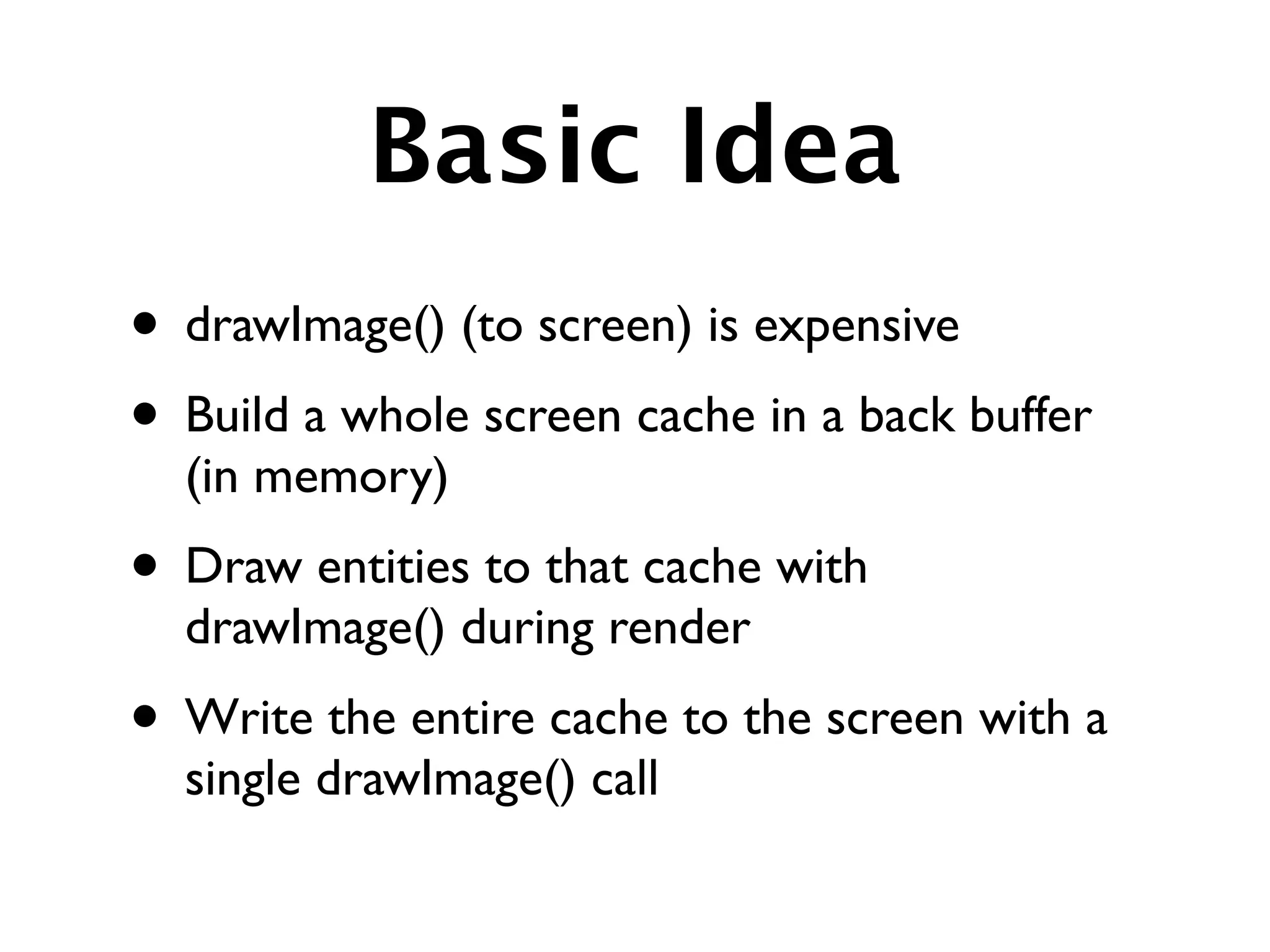
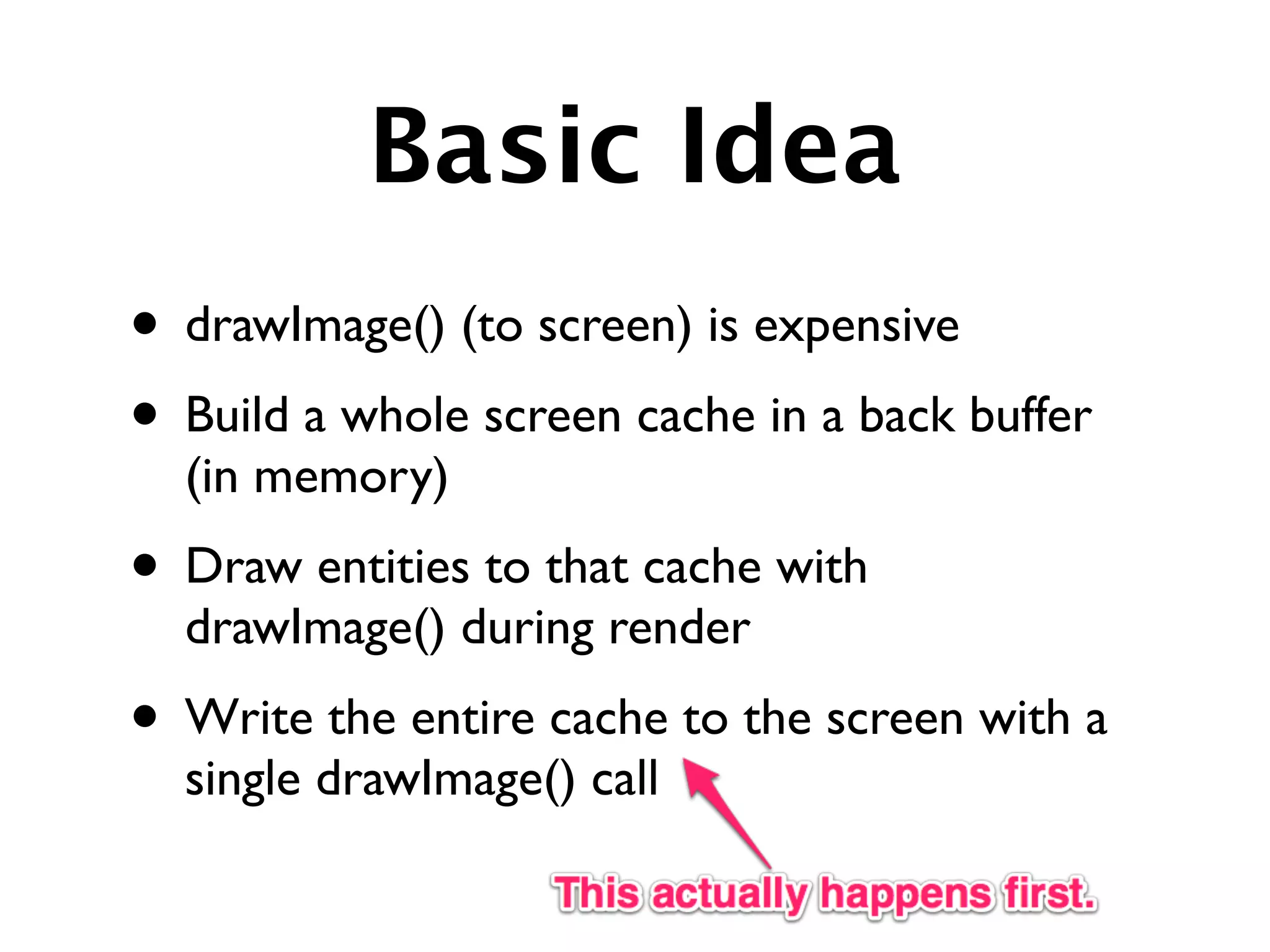
![var backBuffer = document.createElement('canvas'),
backBufferCtx;
backBufferCtx = canvasCache.getContext('2d');
// later...
var render = function () {
var i, ent;
mainCtx.drawImage(backBuffer, 0, 0);
for (i = 0; i > entities.length; i++) {
ent = entities[i];
// this is not quite what you'd do but...
backBufferCtx.drawImage(ent.cache, ent.x, ent.y)
}
}](https://image.slidesharecdn.com/seattle-js-game-dev-120803123321-phpapp01/75/Stupid-Canvas-Tricks-29-2048.jpg)

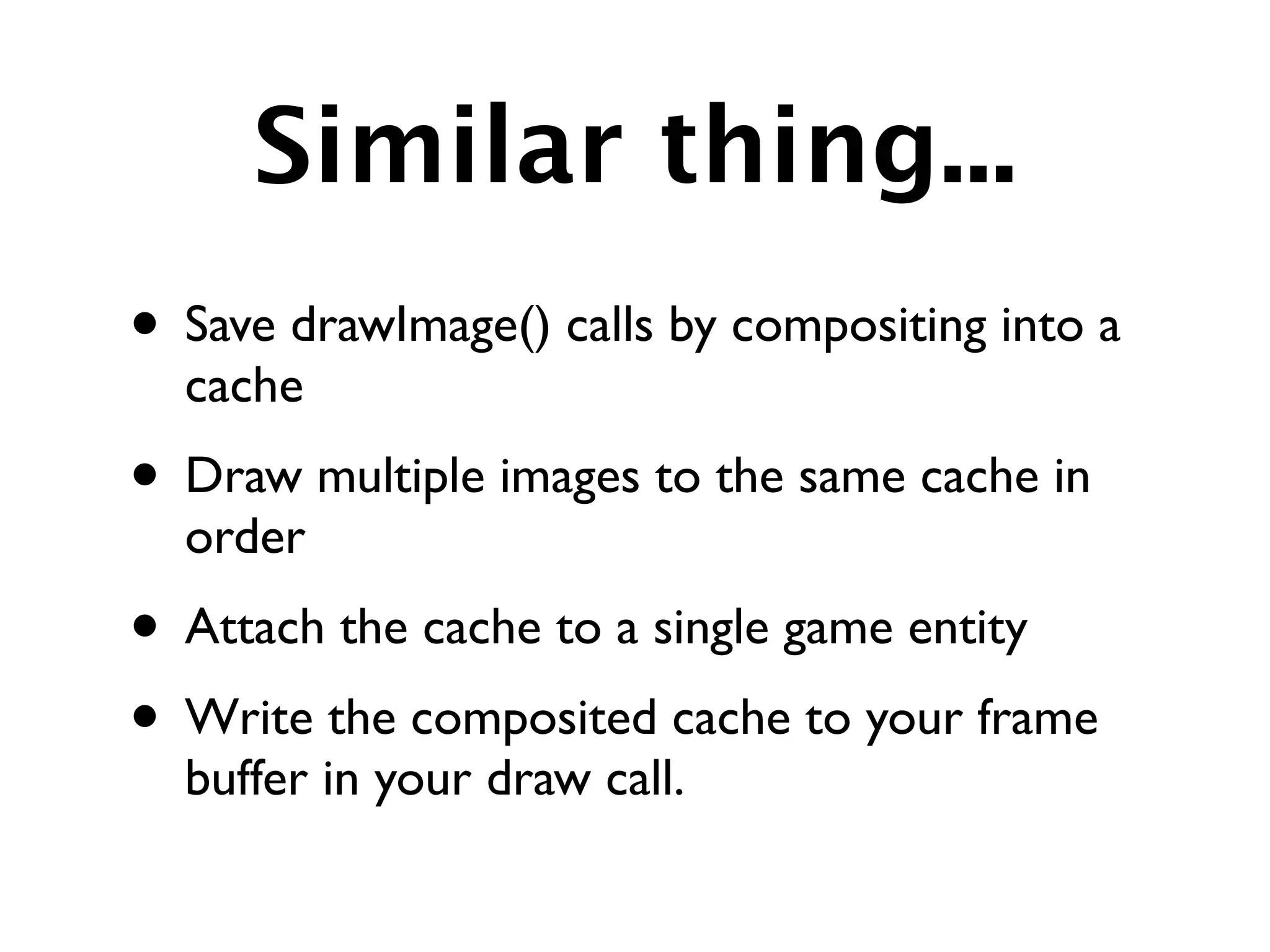
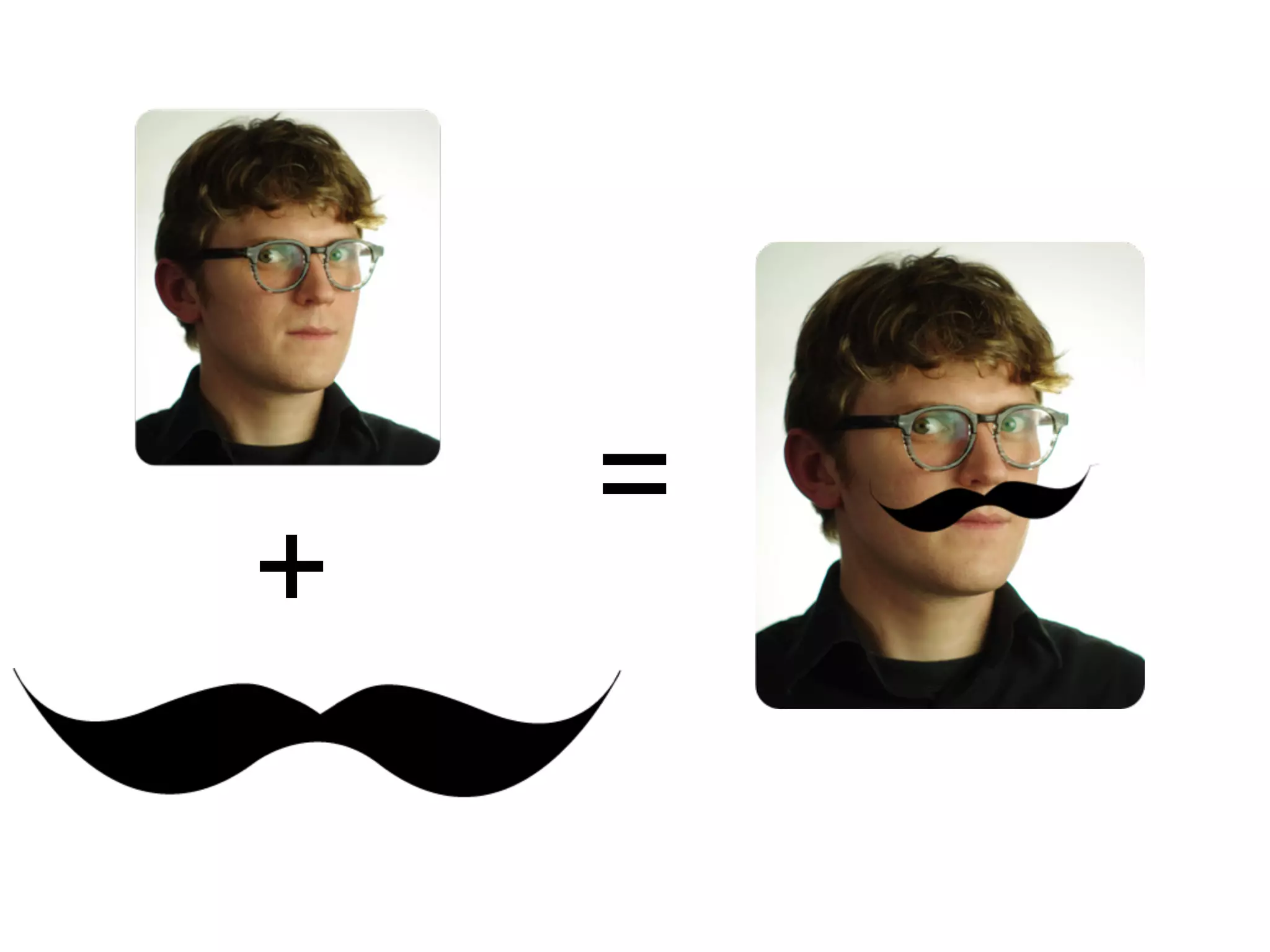
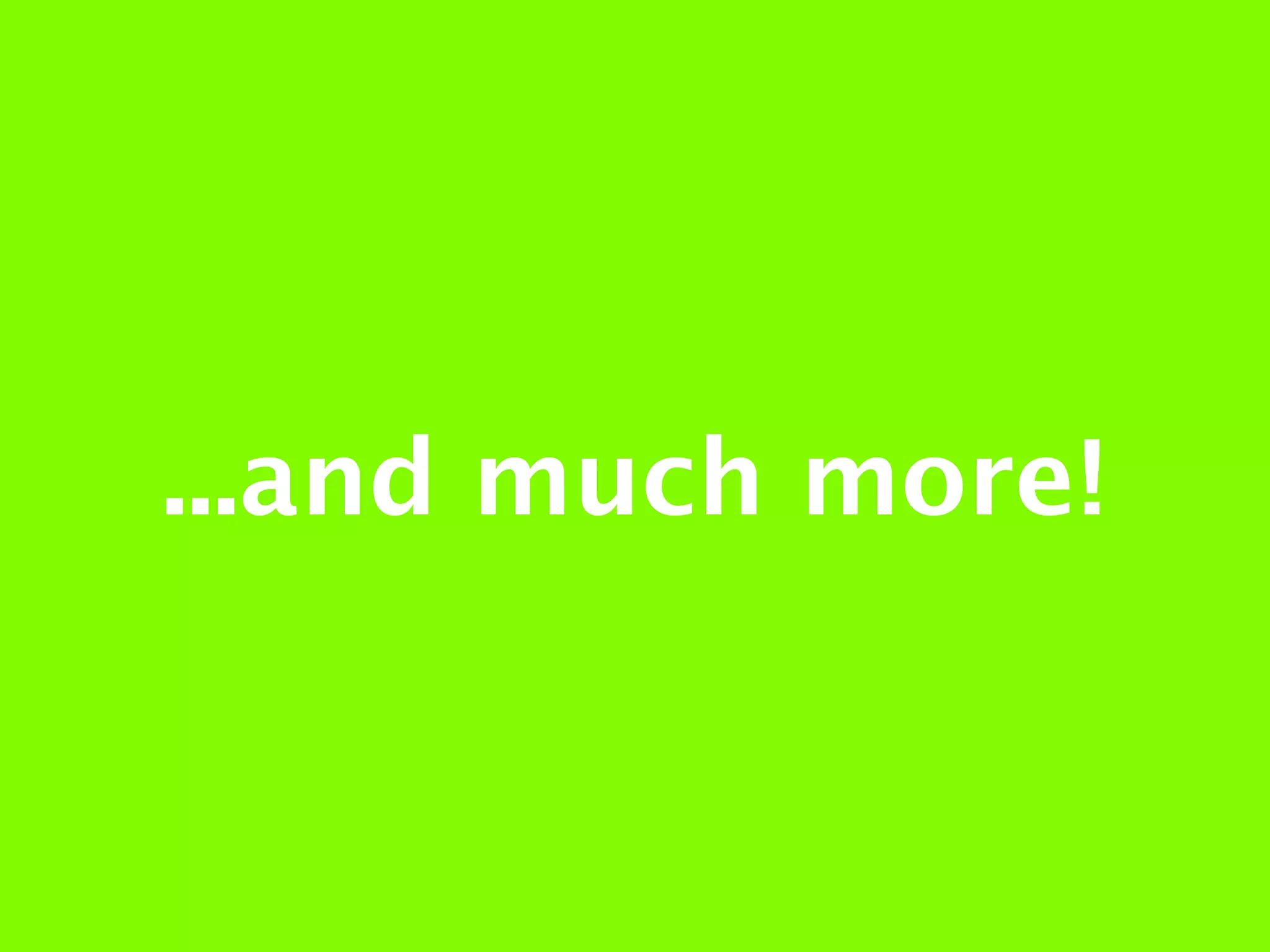

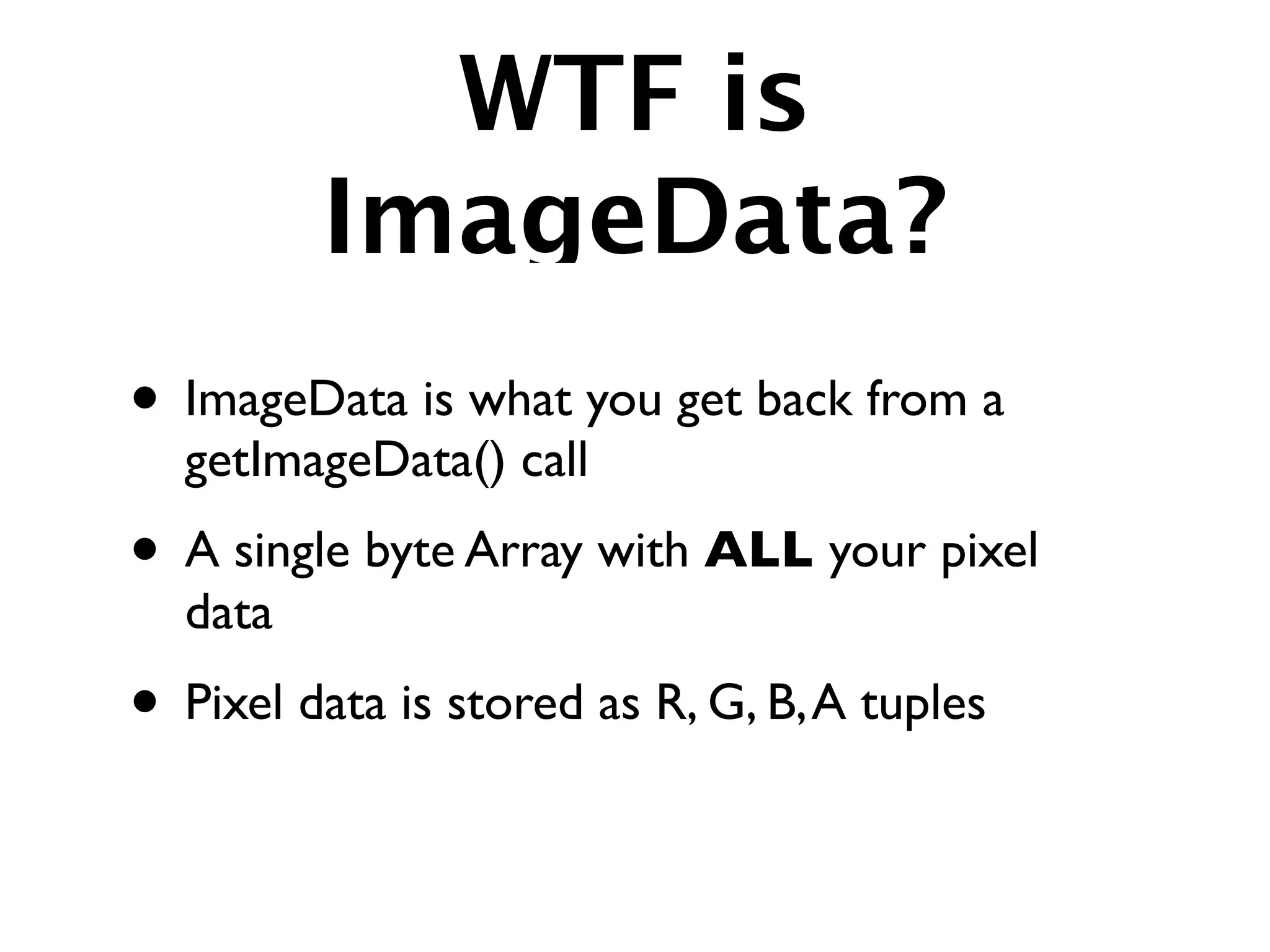
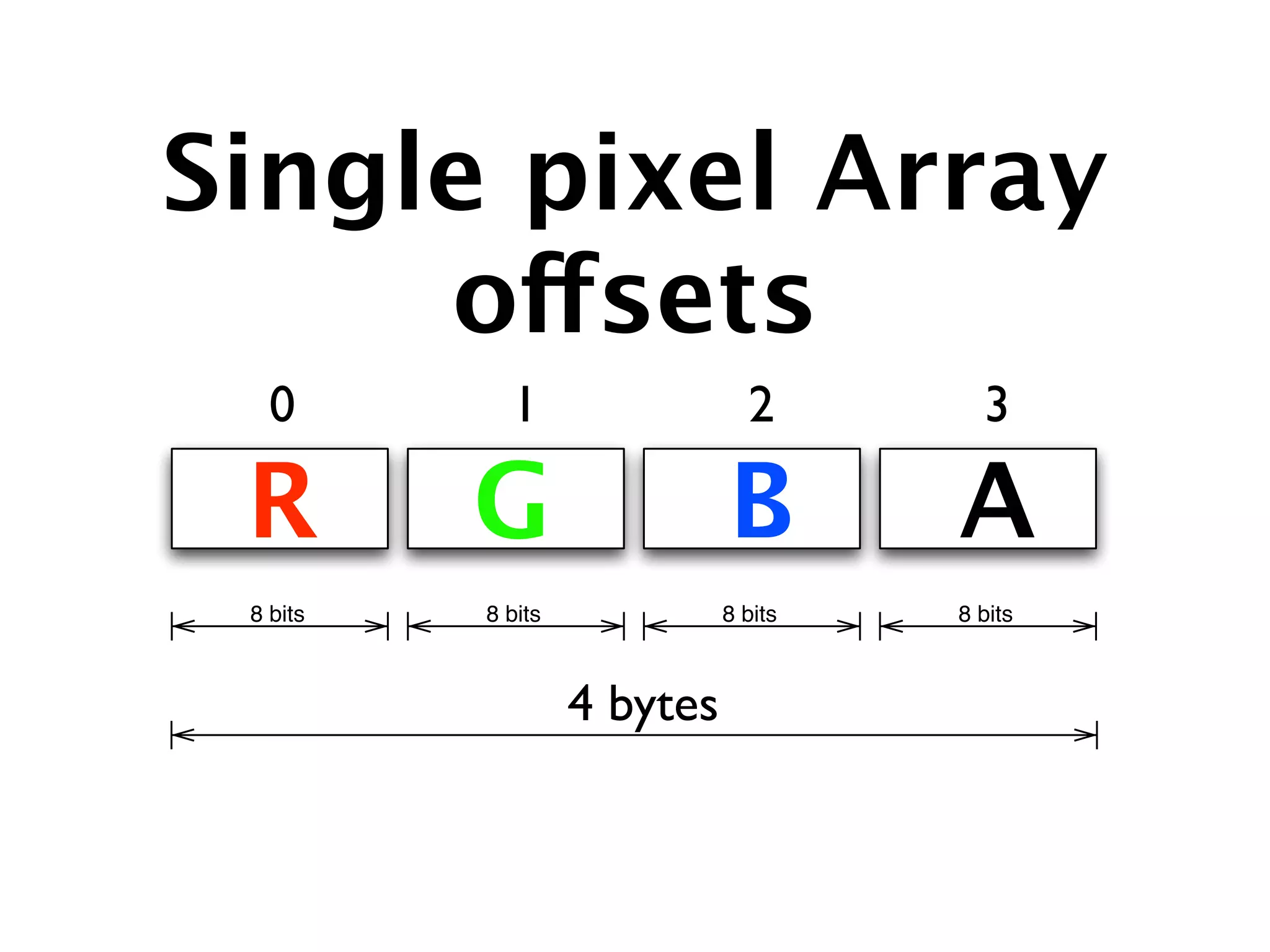

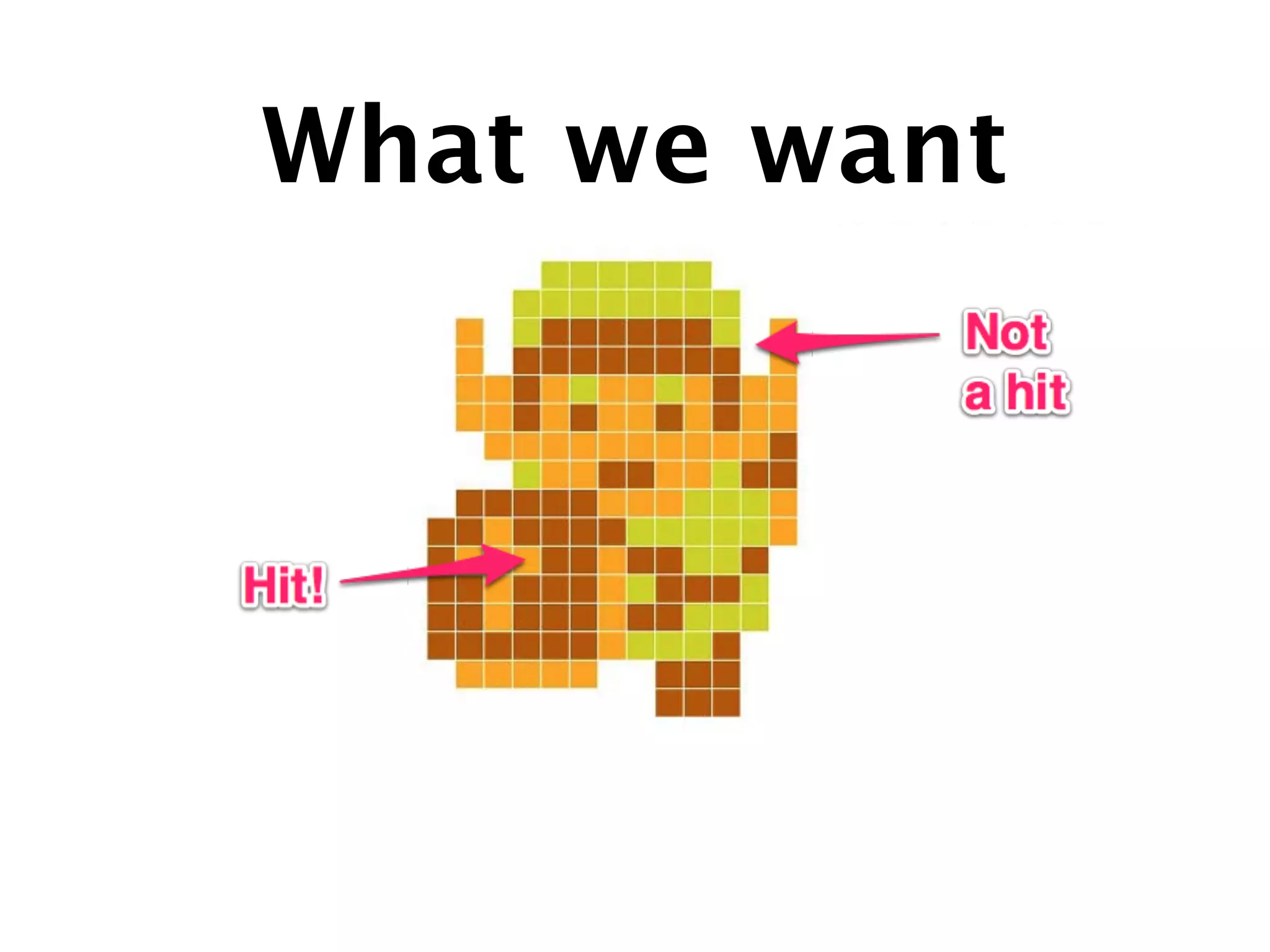
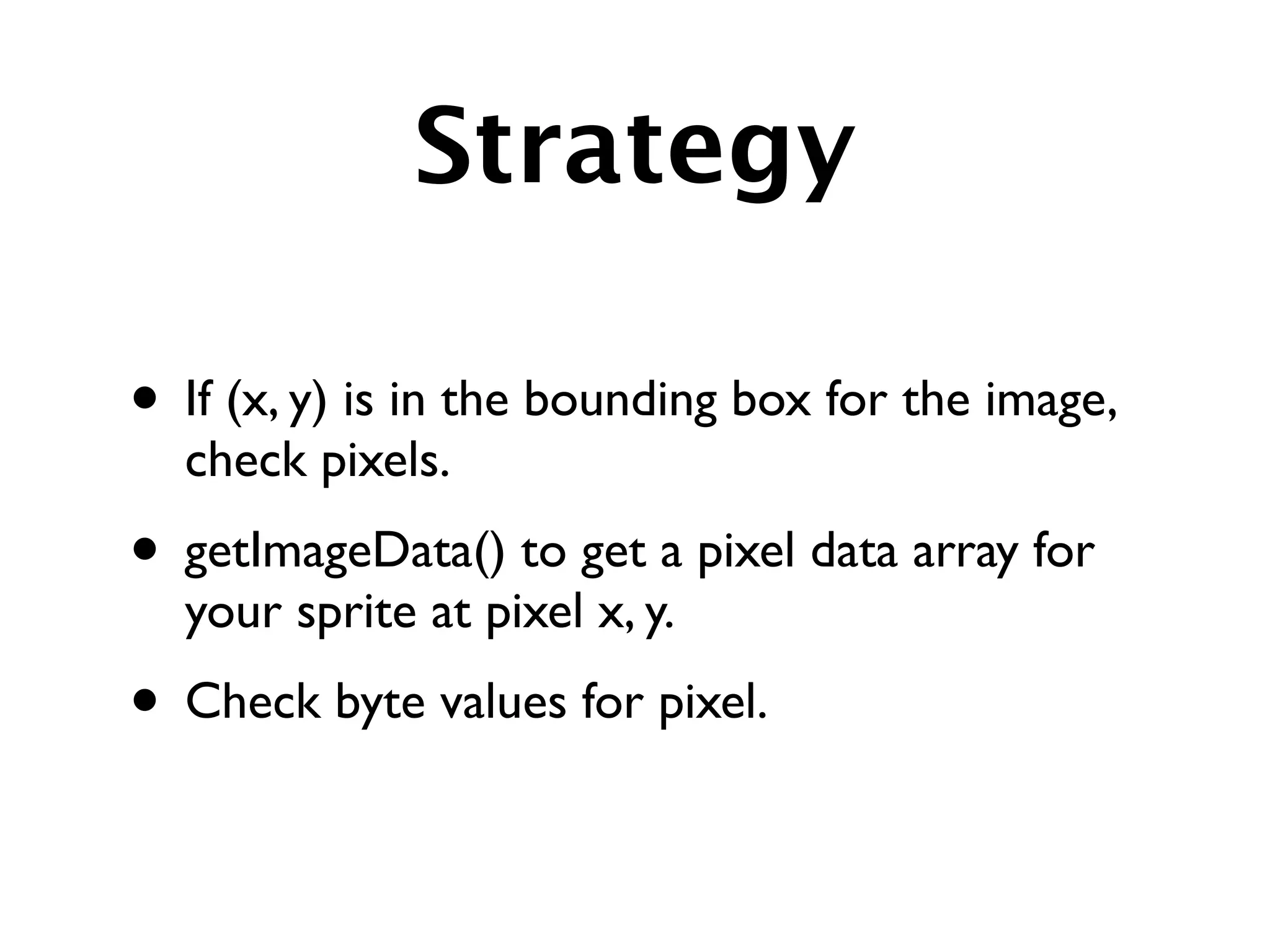
![var isPixelPainted = function (x, y) {
ctx = this.imageCache; // this must be a canvas!
thresh = this.transparencyThreshold || 100;
// Grab a single pixel at x, y: if the alpha channel is greater
// than the threshold, we're in business. idata acts like a byte
// array with each pixel occupying 4 slots (R, G, B , A).
idata = ctx.getImageData(x, y, 1, 1);
return idata.data[3] > thresh;
}](https://image.slidesharecdn.com/seattle-js-game-dev-120803123321-phpapp01/75/Stupid-Canvas-Tricks-40-2048.jpg)
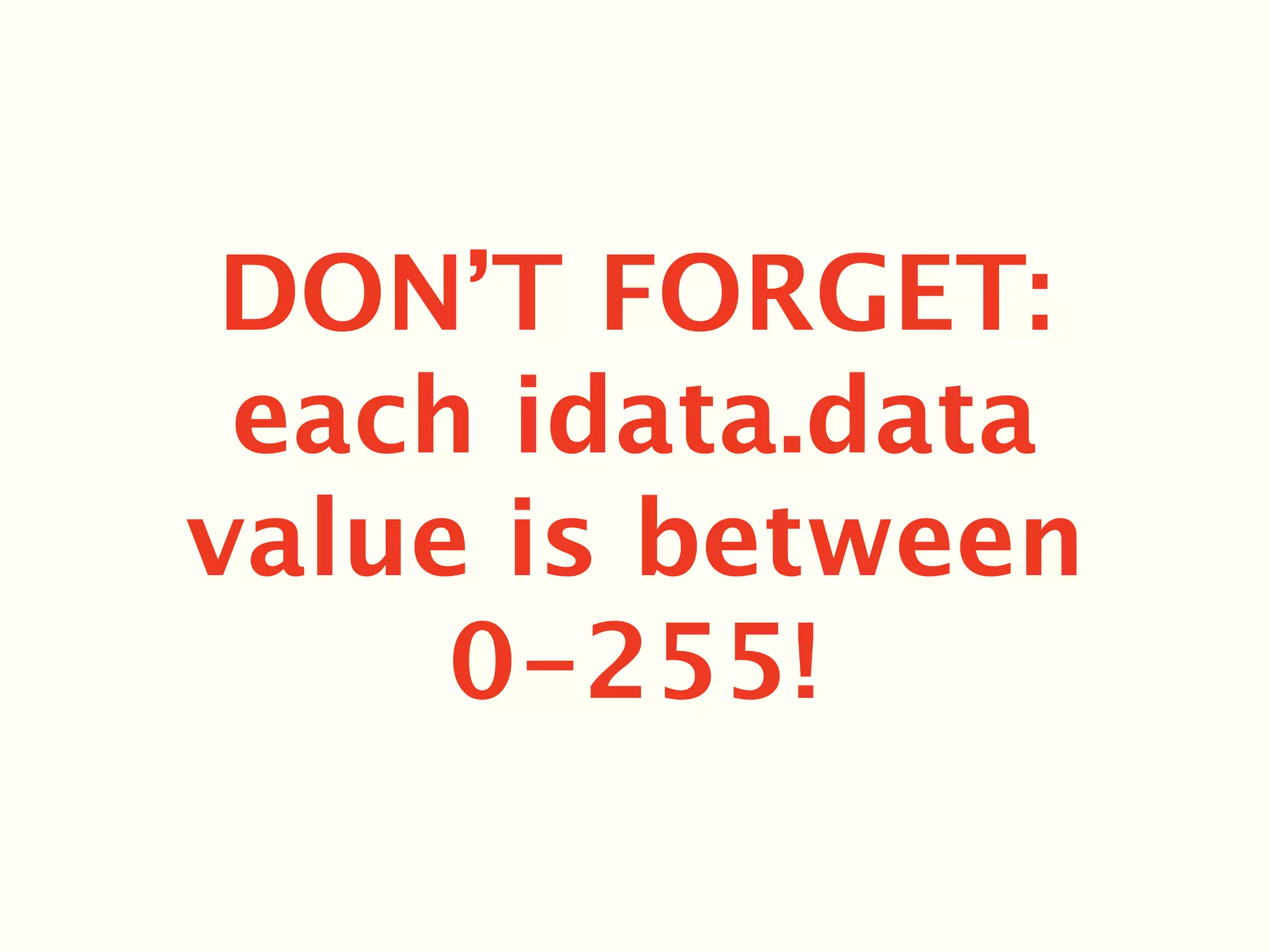
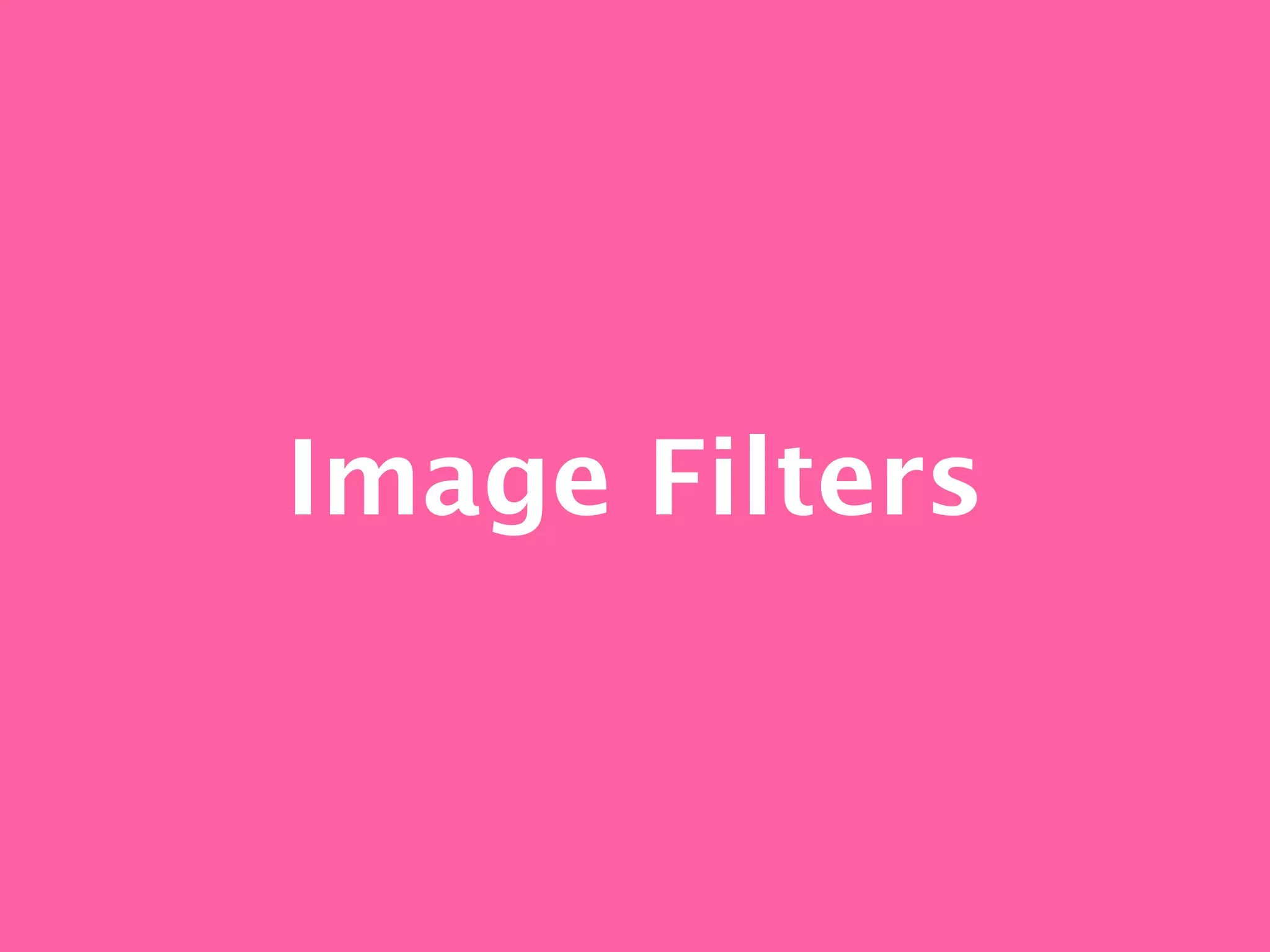
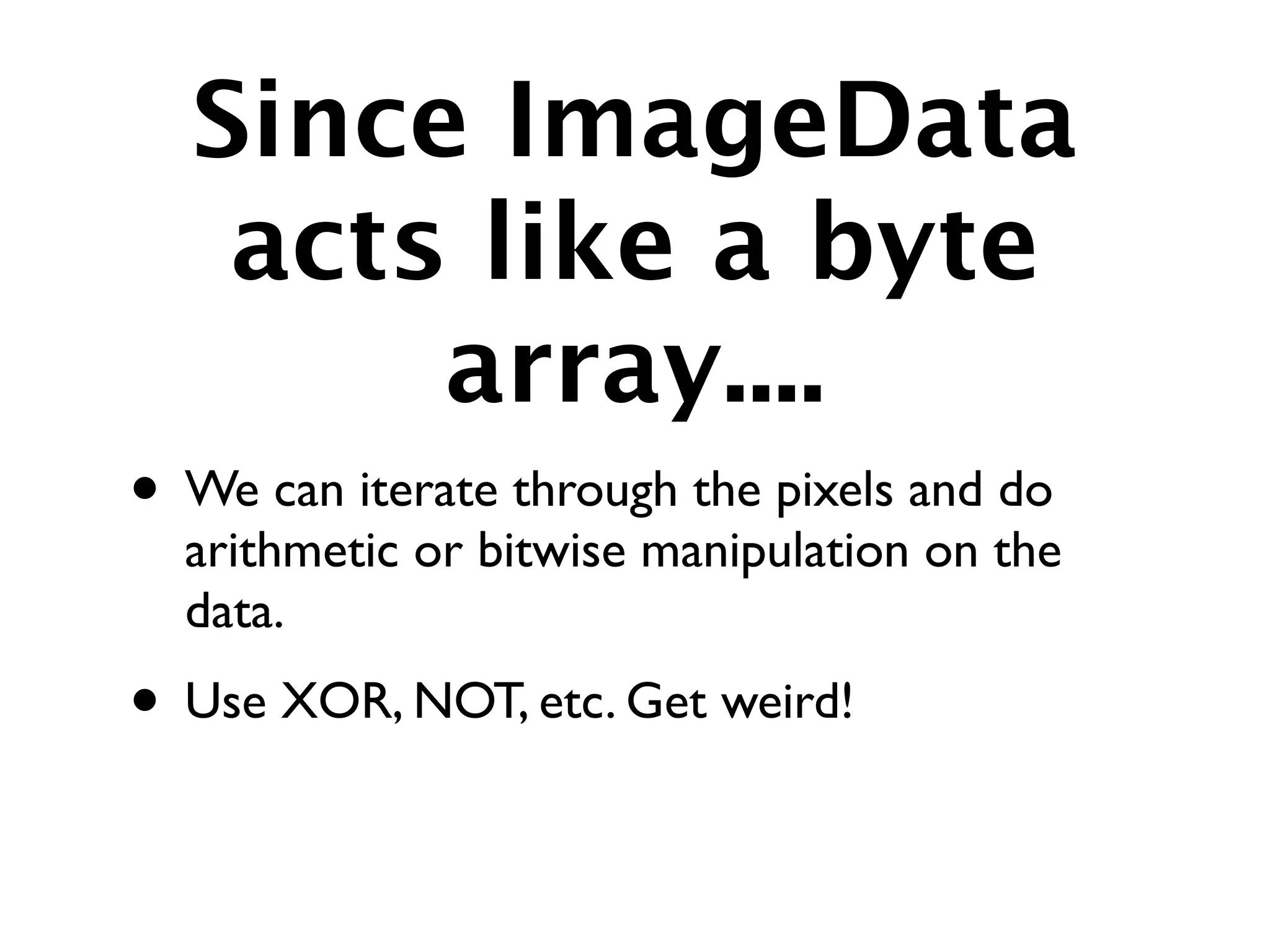
![var filter = function (x, y, w, h) {
if (!this._cache) return;
var ctx = this._cache.getContext('2d'),
idata = ctx.getImageData(x, y, w, h),
i;
for (i = 0; i < idata.data.length; i++) {
idata.data[i] = (idata.data[i]++) % 255;
}
};](https://image.slidesharecdn.com/seattle-js-game-dev-120803123321-phpapp01/75/Stupid-Canvas-Tricks-44-2048.jpg)
![var filter = function (x, y, w, h) {
if (!this._cache) return;
var ctx = this._cache.getContext('2d'),
idata = ctx.getImageData(x, y, w, h),
i;
for (i = 0; i < idata.data.length; i++) {
if (! i % 4 === 3) continue;
idata.data[i] = (idata.data[i]++) % 255;
}](https://image.slidesharecdn.com/seattle-js-game-dev-120803123321-phpapp01/75/Stupid-Canvas-Tricks-45-2048.jpg)
